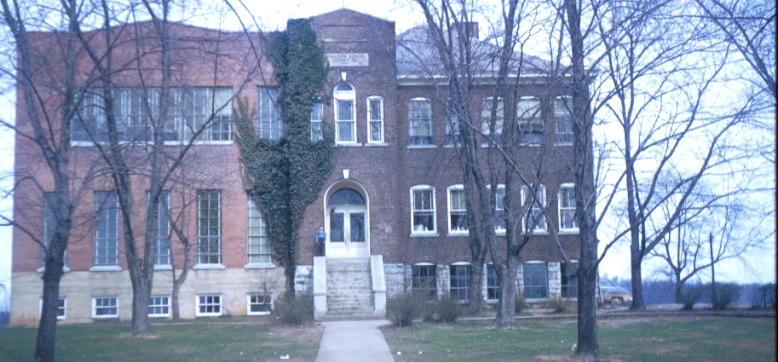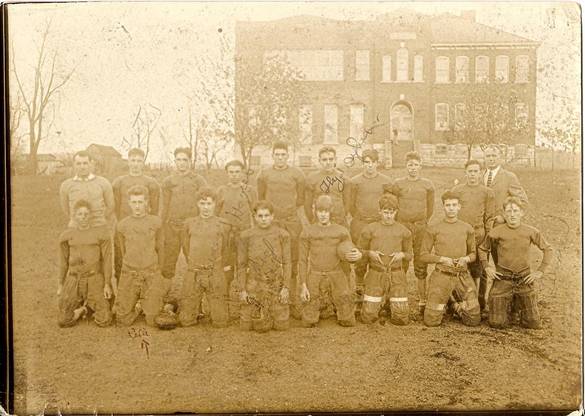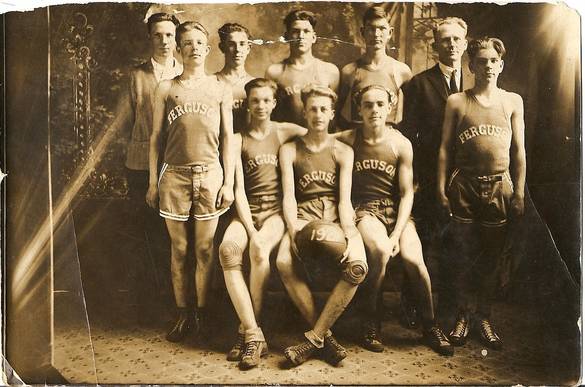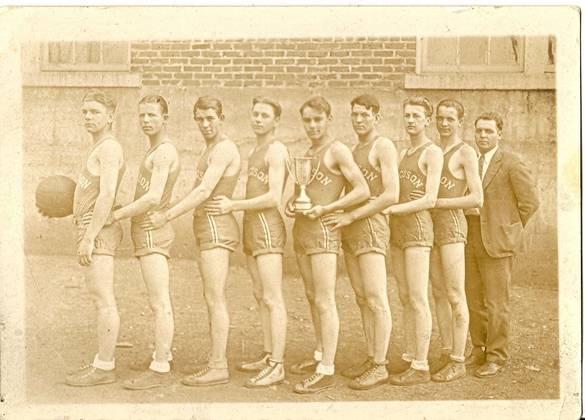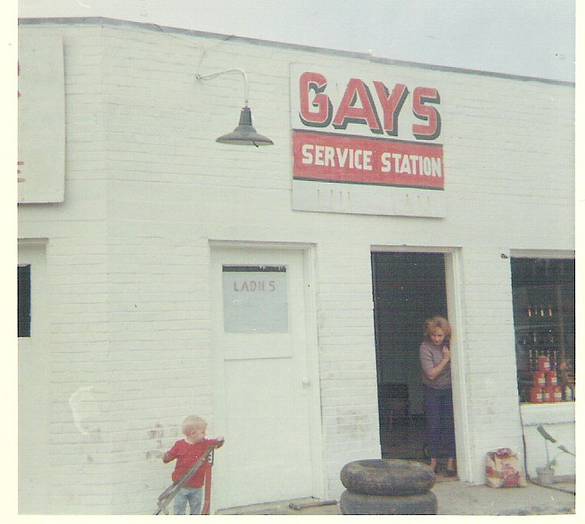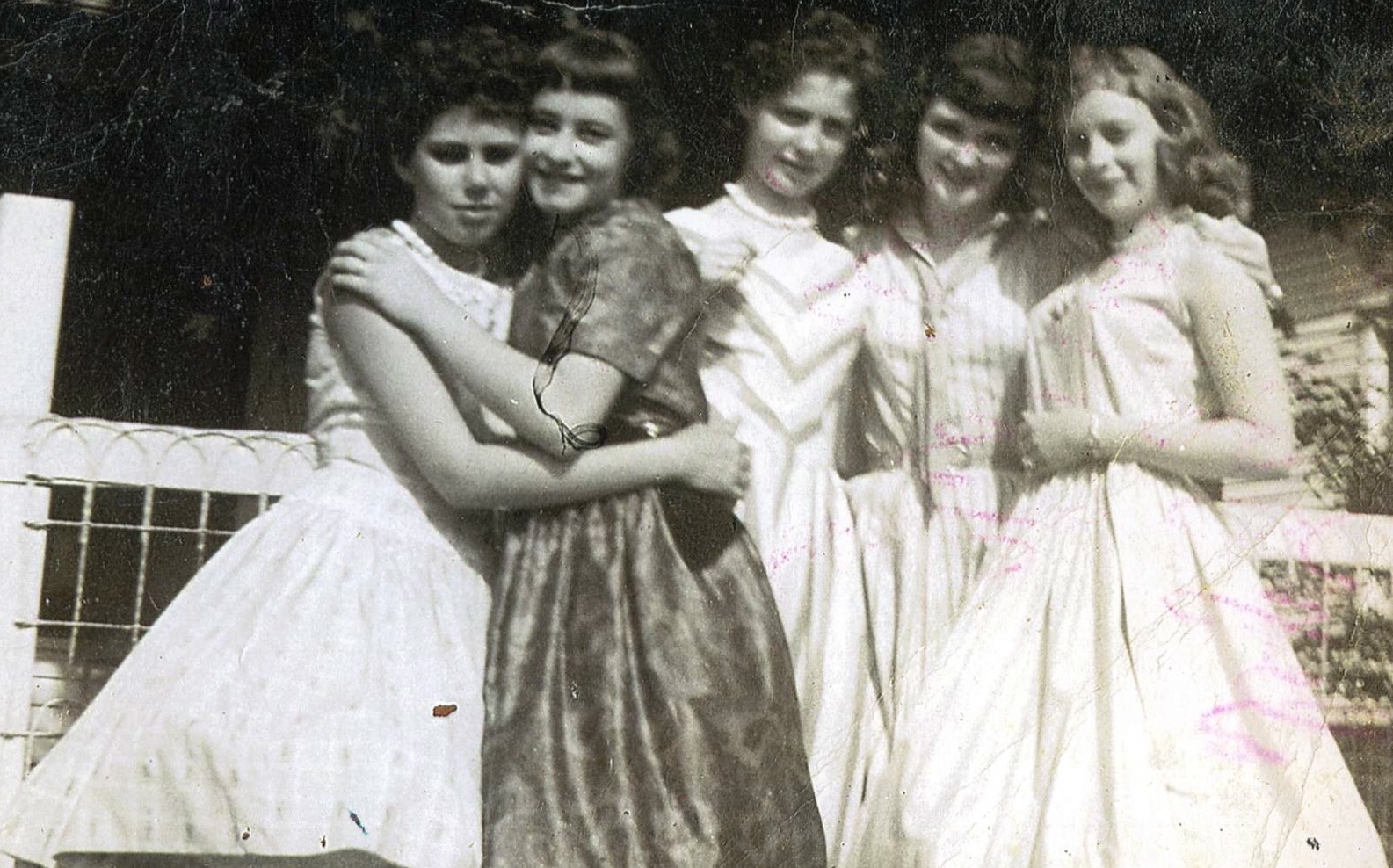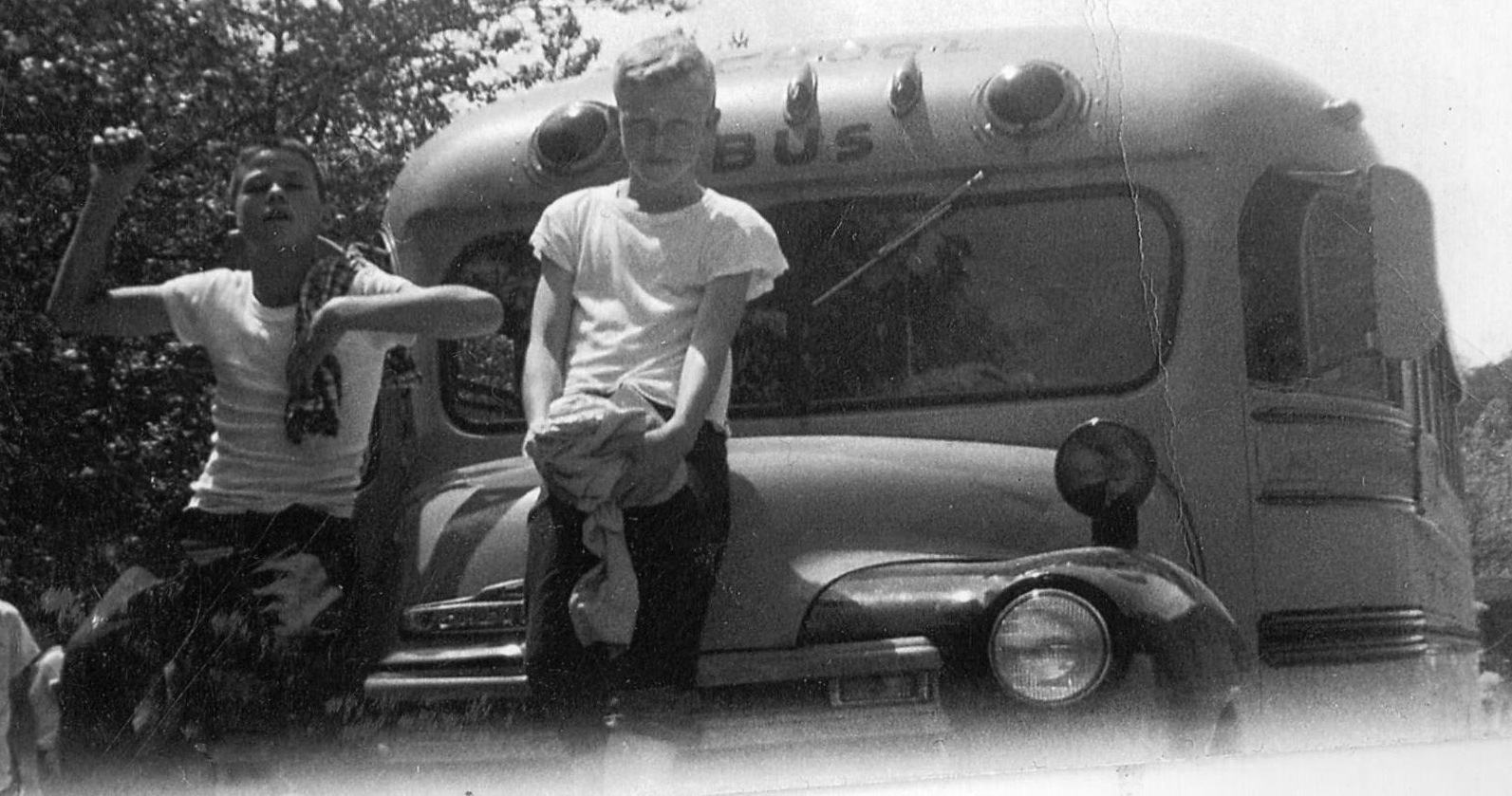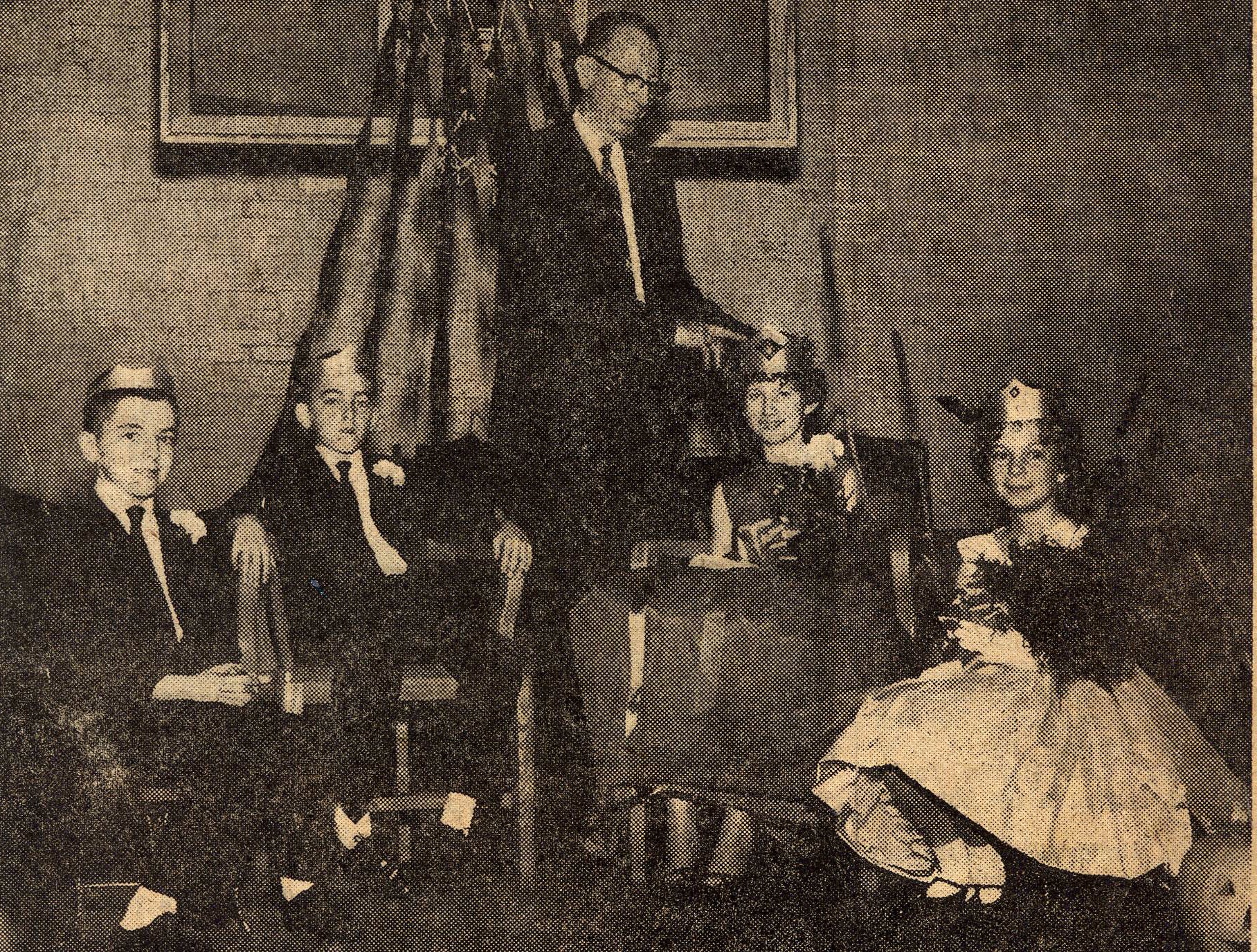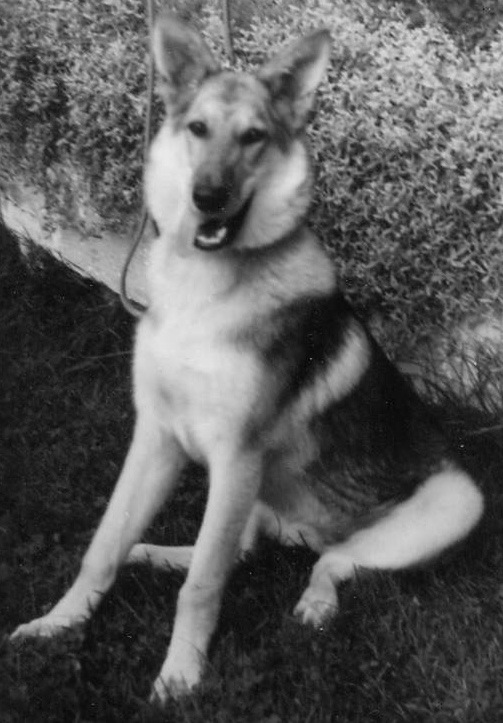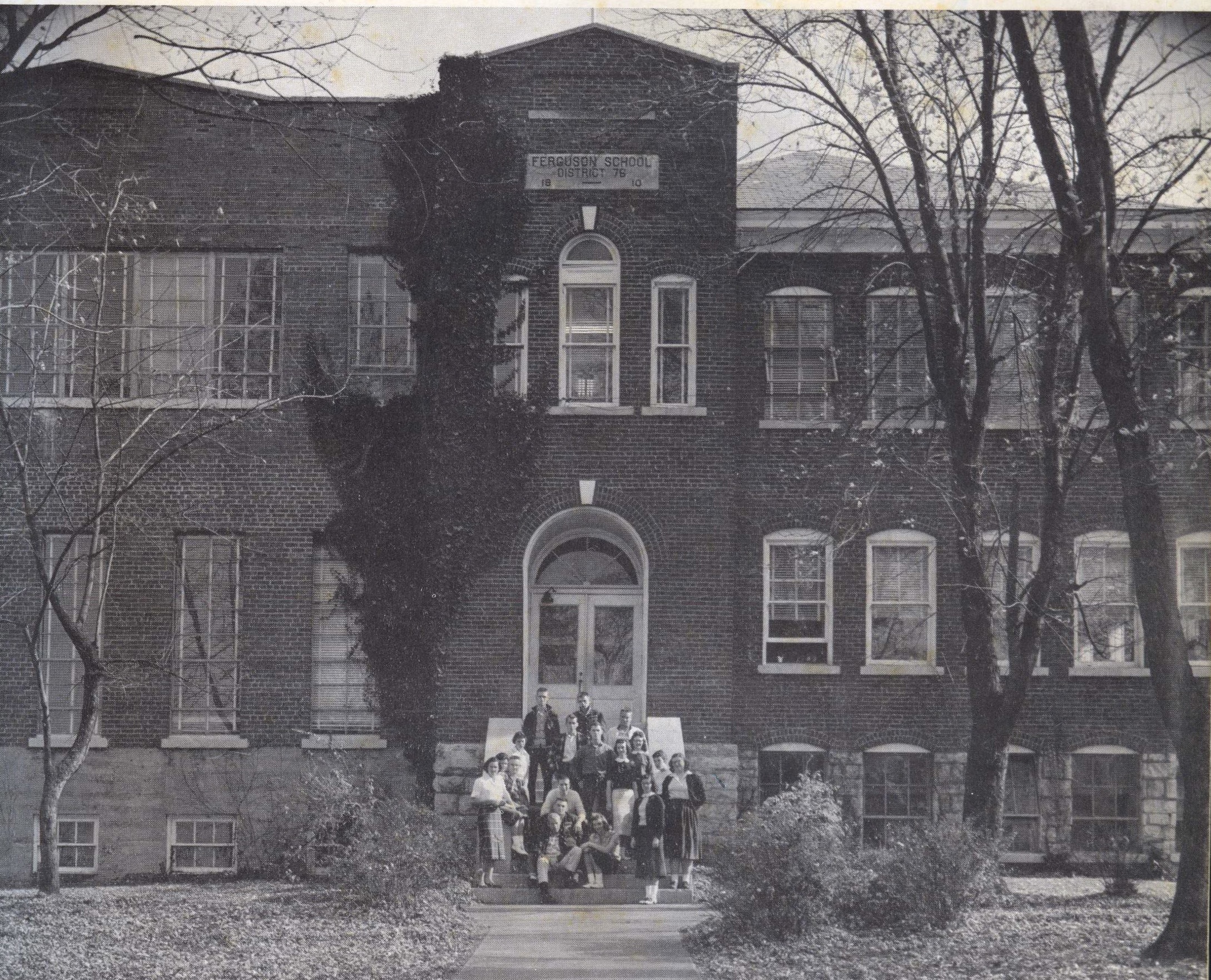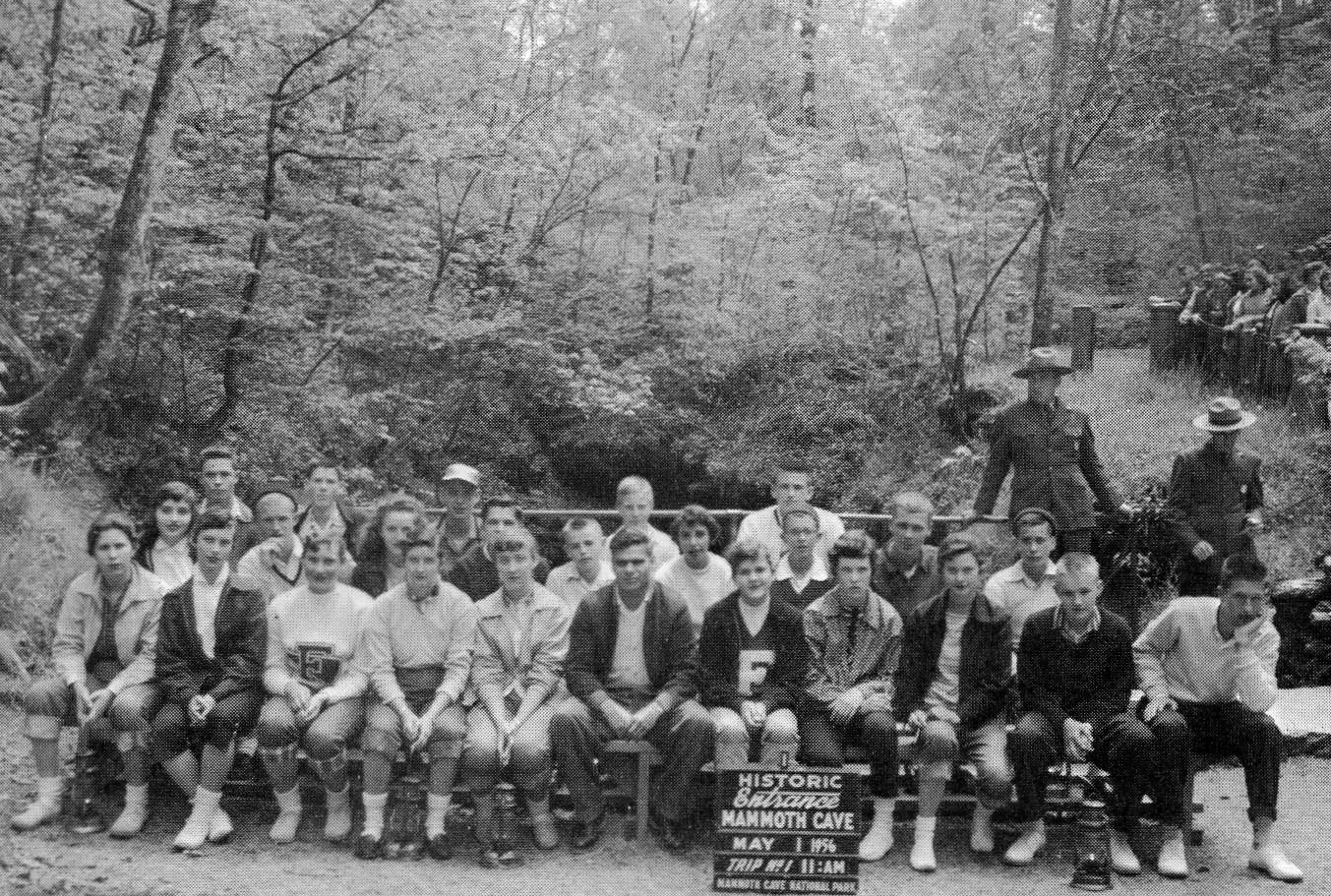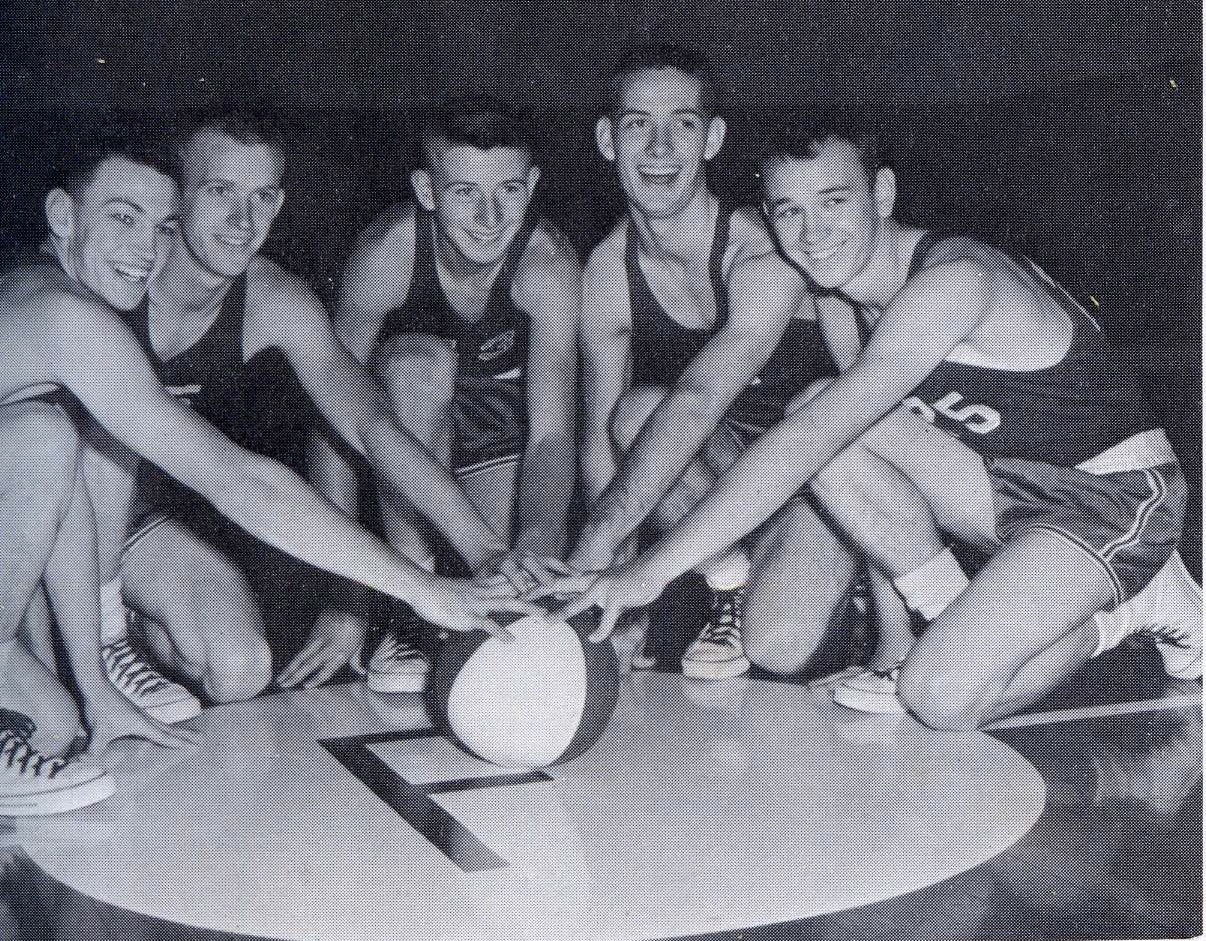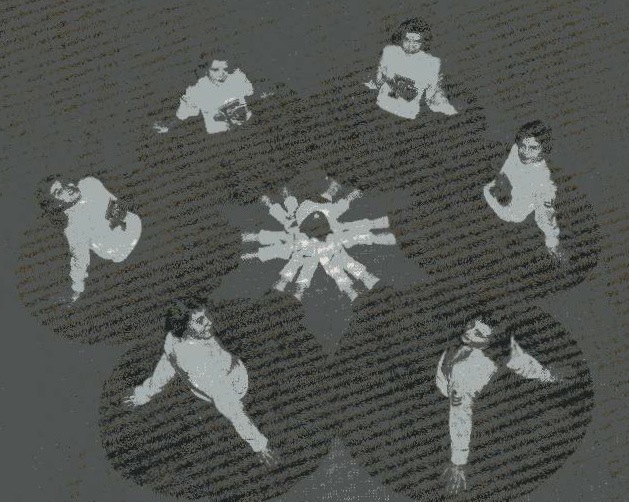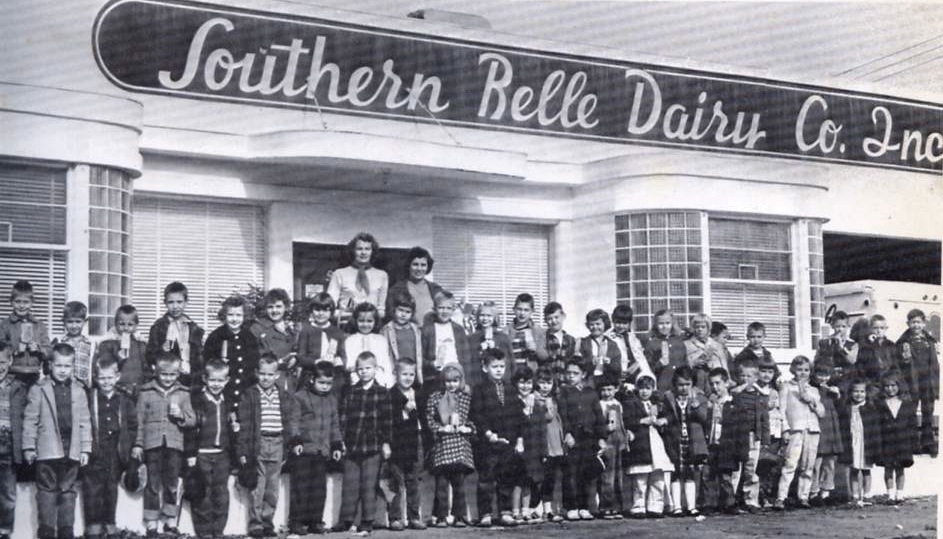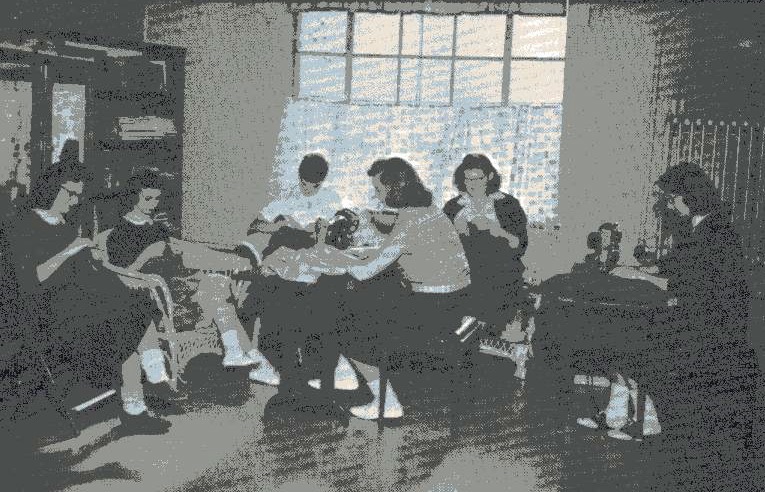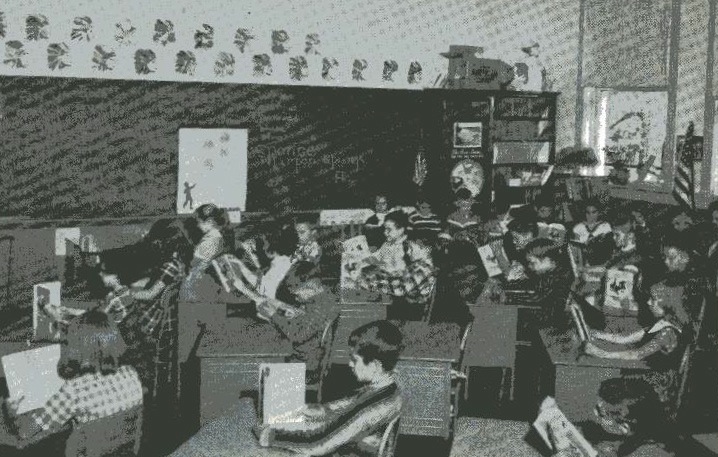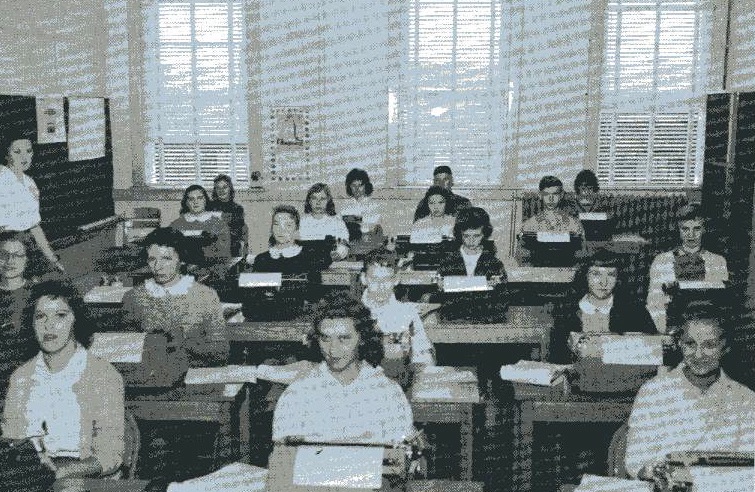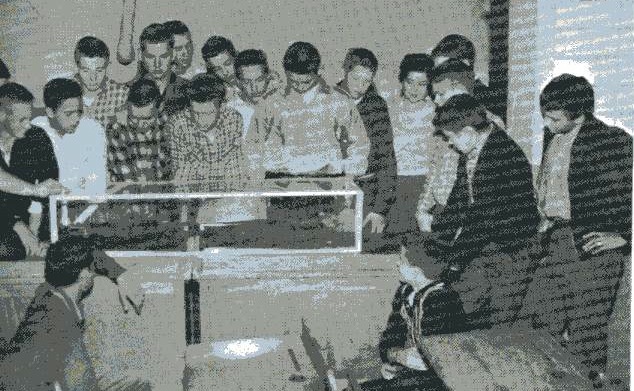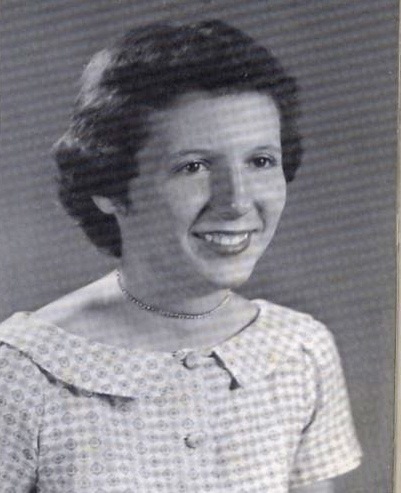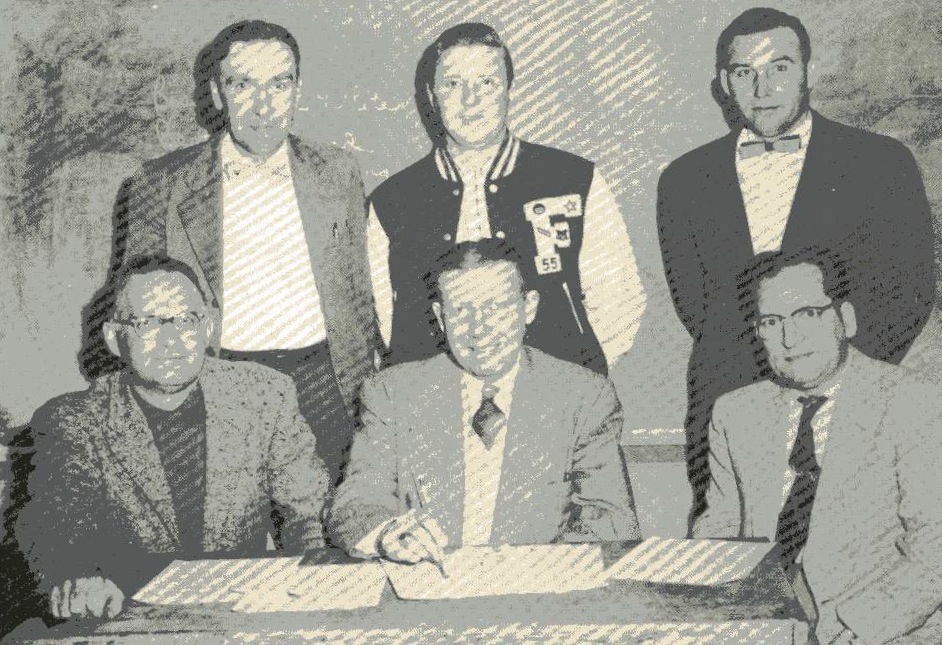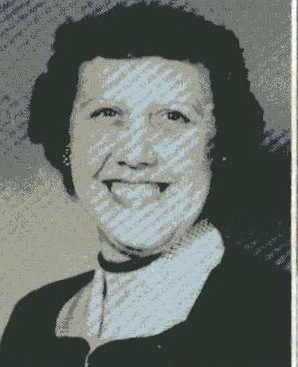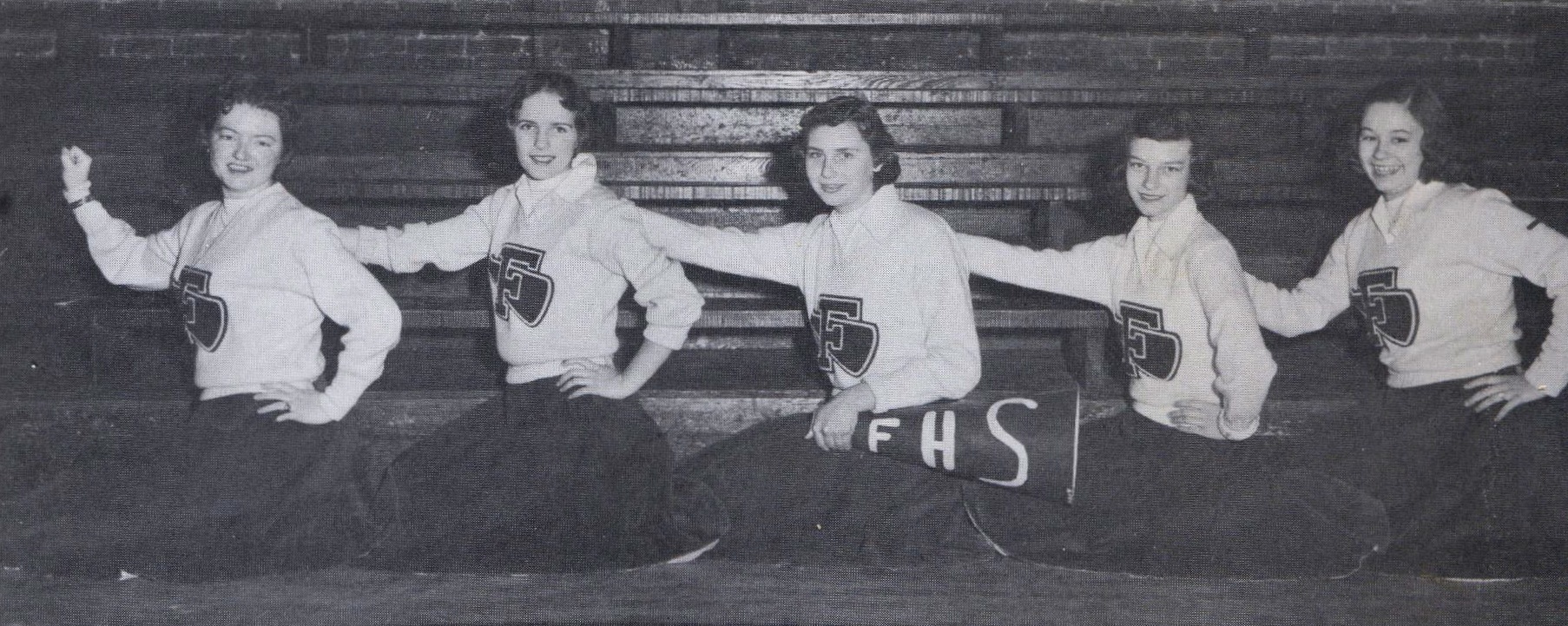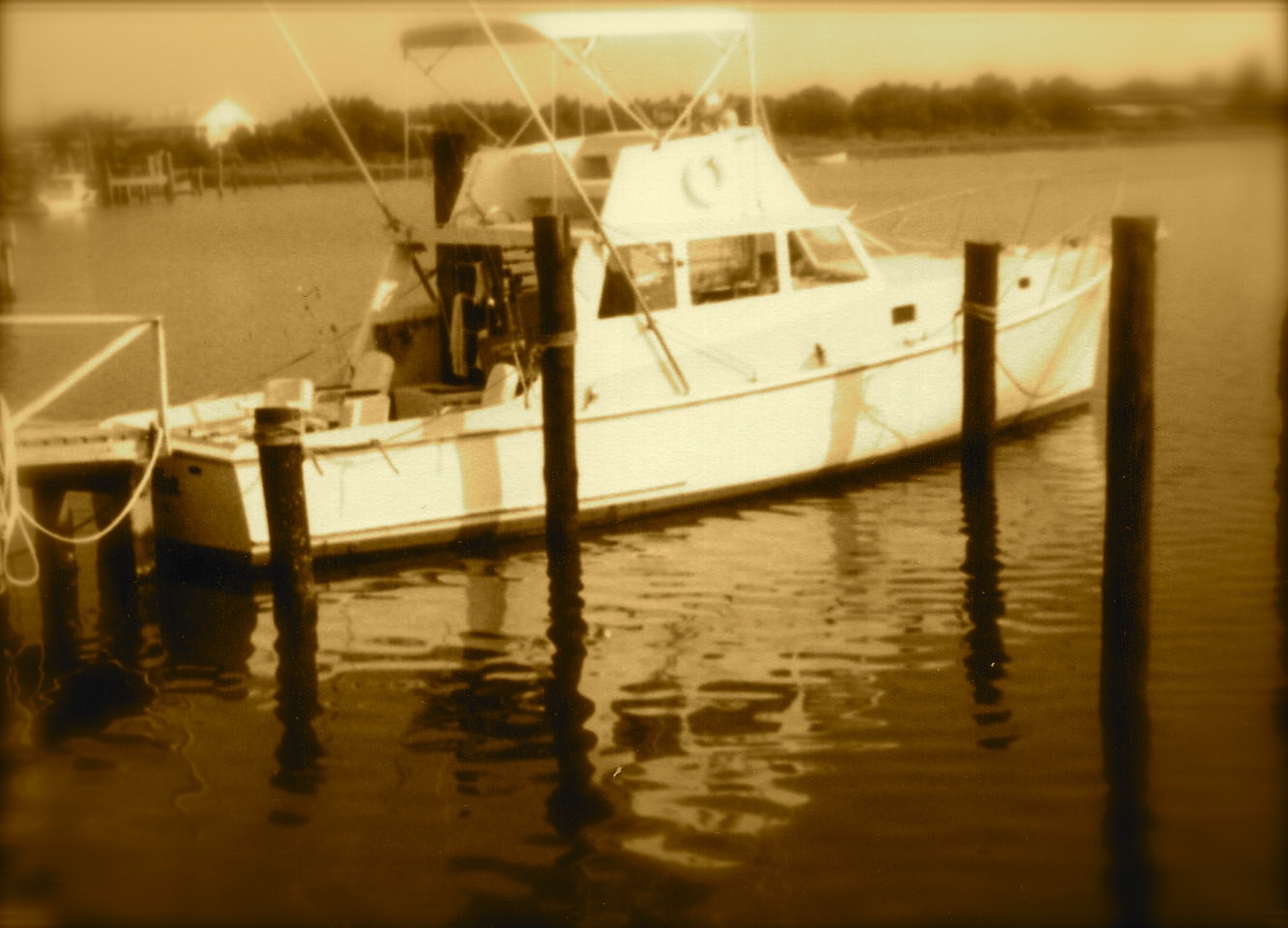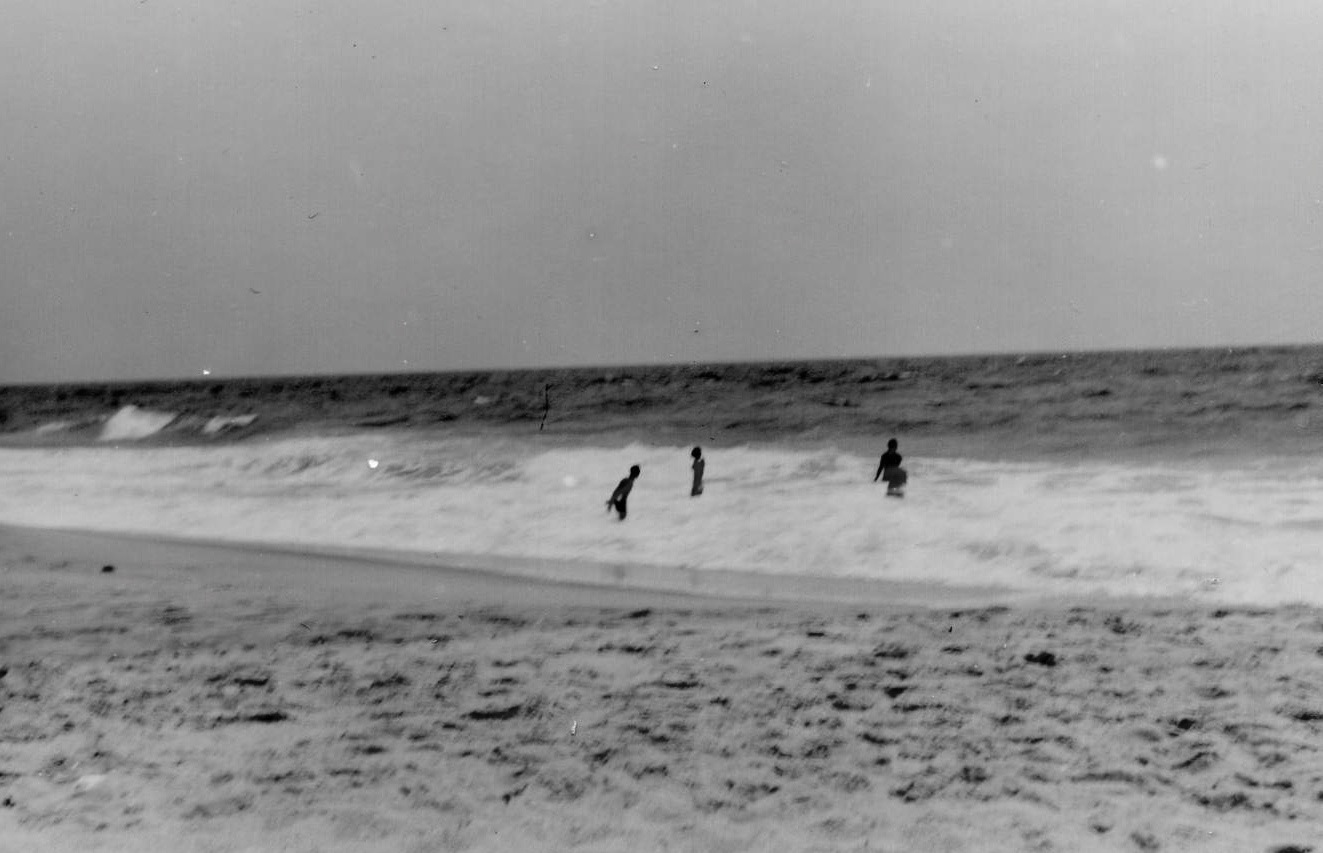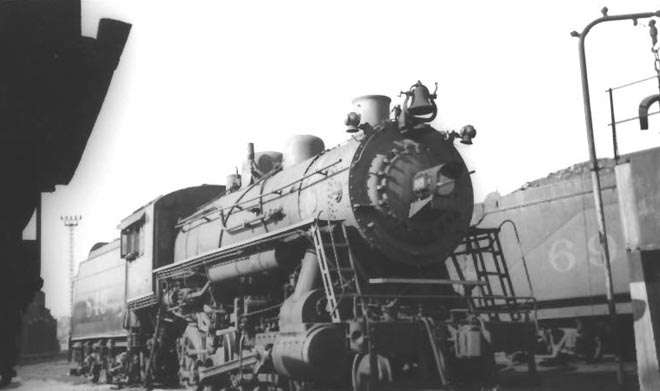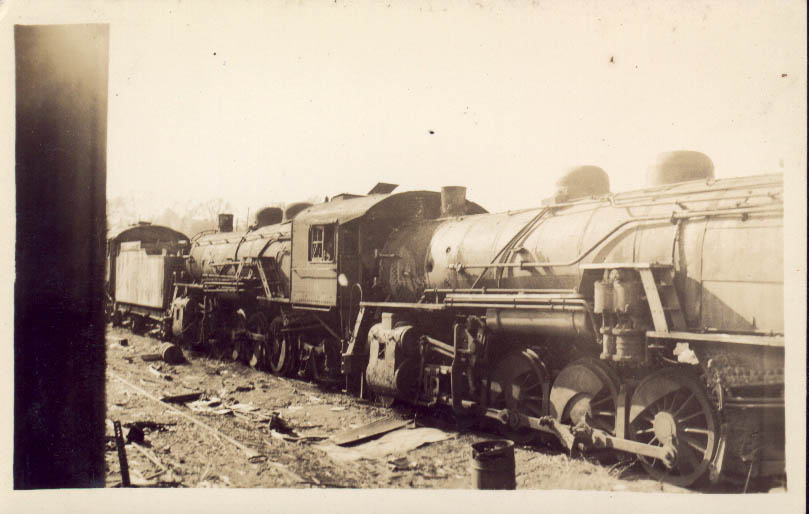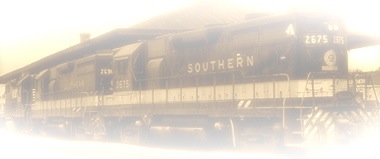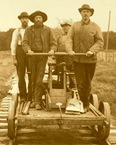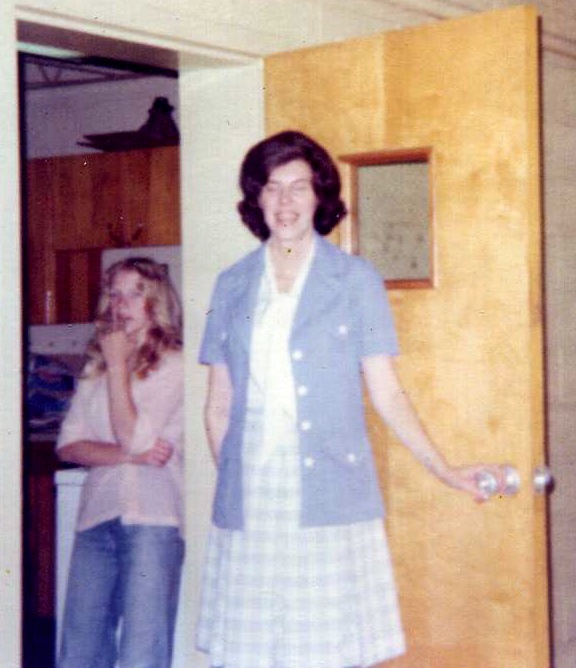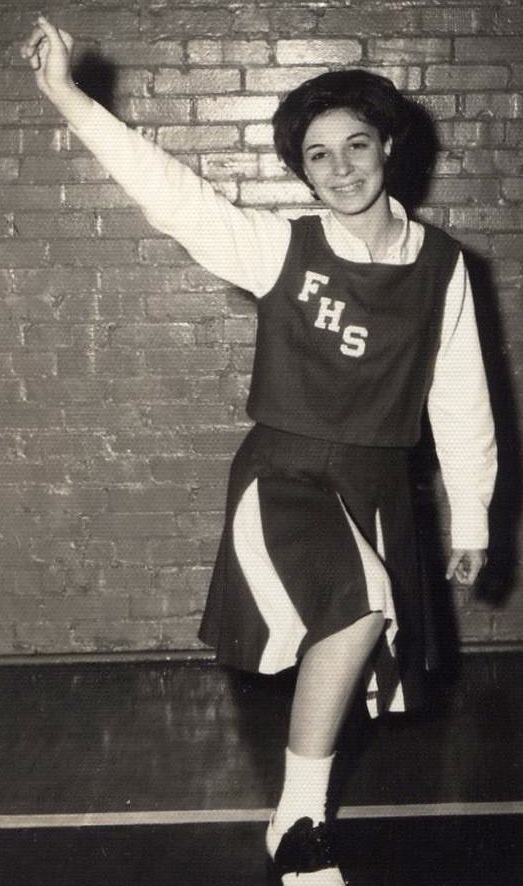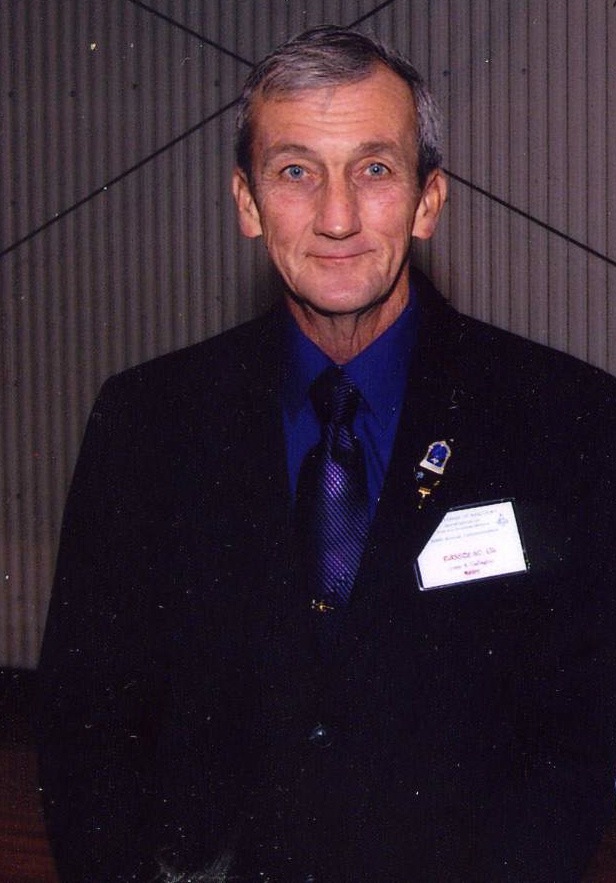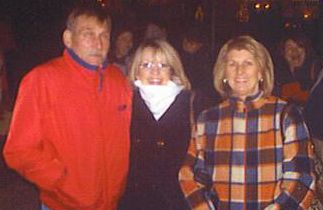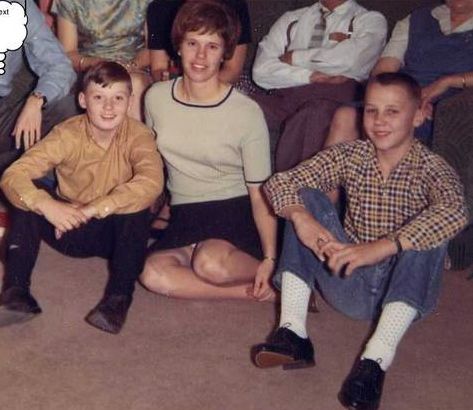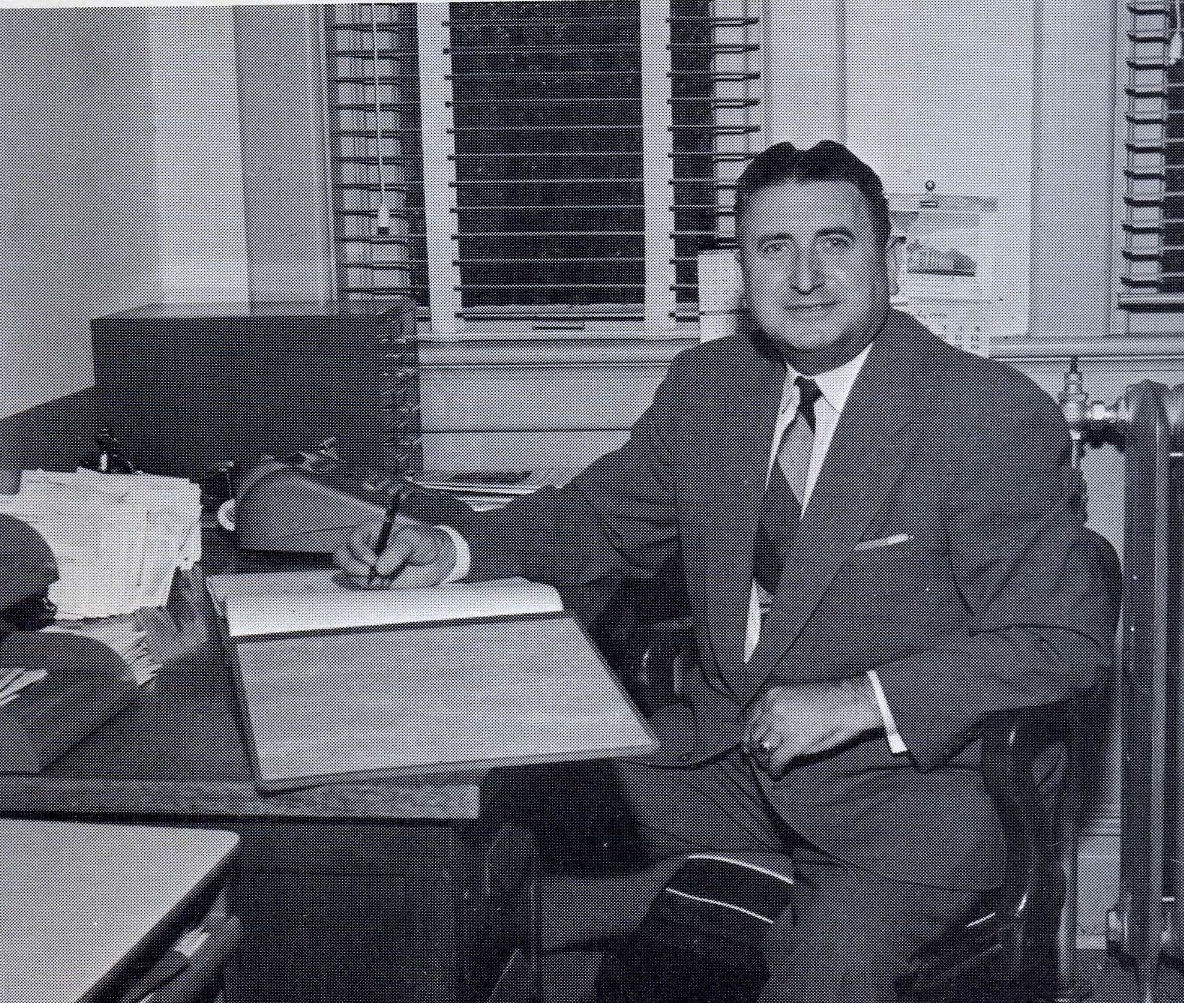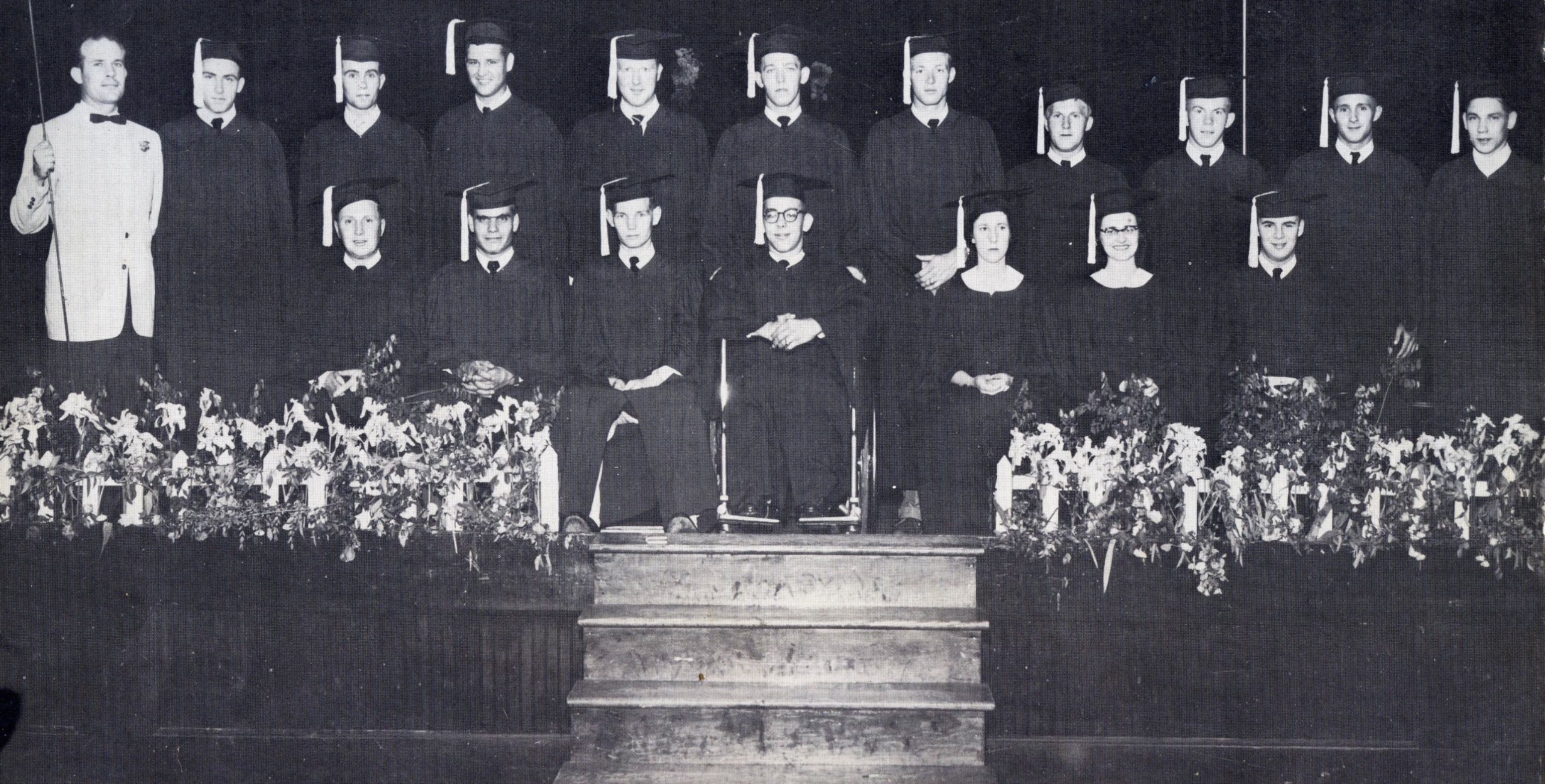October 15, 1928-----Ferguson School dedicated its magnificent new $19,000 gymnasium yesterday to a capacity crowd of 800. Built by local contractor George Elliott, the building is the finest basketball facility in the 12th Region except for the Centre College Field House, which hosts the annual State Tournament every March. The Ferguson Gym will become the home of the 47th District Tournament for the foreseeable future, it being unlikely any other school in the county will surpass it for a long time. The gym is of red brick, with a balcony above the west end of the basketball floor and a basement underneath the entire floor. The basement includes rest rooms, dressing rooms, lockers, showers, furnace room and coaching offices. The playing floor is of maple. It is 96 ft. by 55 ft., making it the largest high school floor in the state and actually equalling a standard college floor. The main building is 110 feet long, with a 45 ft. wide porch and ticket windows added to the front, facing Jacksboro Road. There are three half circle arches, one over each entrance and one over the large window. Braces and main beams are in place to add balconies on both sides, allowing for future expansion.
|
Six large windows border each side of the main floor, placed high enough to be above those potential balconies. Five steel trusses arch 30 feet above the floor, providing more clearance than even the Centre Field House. Six windows line each side of the basement, with two along the front under the porch. The lighting over the playing floor is very bright, and additional lights illuminate the entries, porch and basement. Rows of raised seats line both sides of the floor, each extending end line to end line. Perhaps the most memorable feature of the entire building is the electric scoreboard. The first of its kind in the region, the clock, scores and even the quarters are controlled by an operator seated at midcourt. There is no need for a student to stand on a ladder and turn wheels or use chalk and eraser. Players and officials will appreciate the end zone clearance. There is a full five feet from the edge of the playing surface to the wall on both ends, a welcome relief from those many gyms where the walls are the out of bounds lines and the backboards are mounted flush with the walls. All in all, the gym is a great advance for basketball in Pulaski County and the 12th Region. |

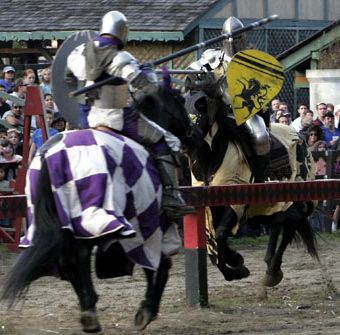
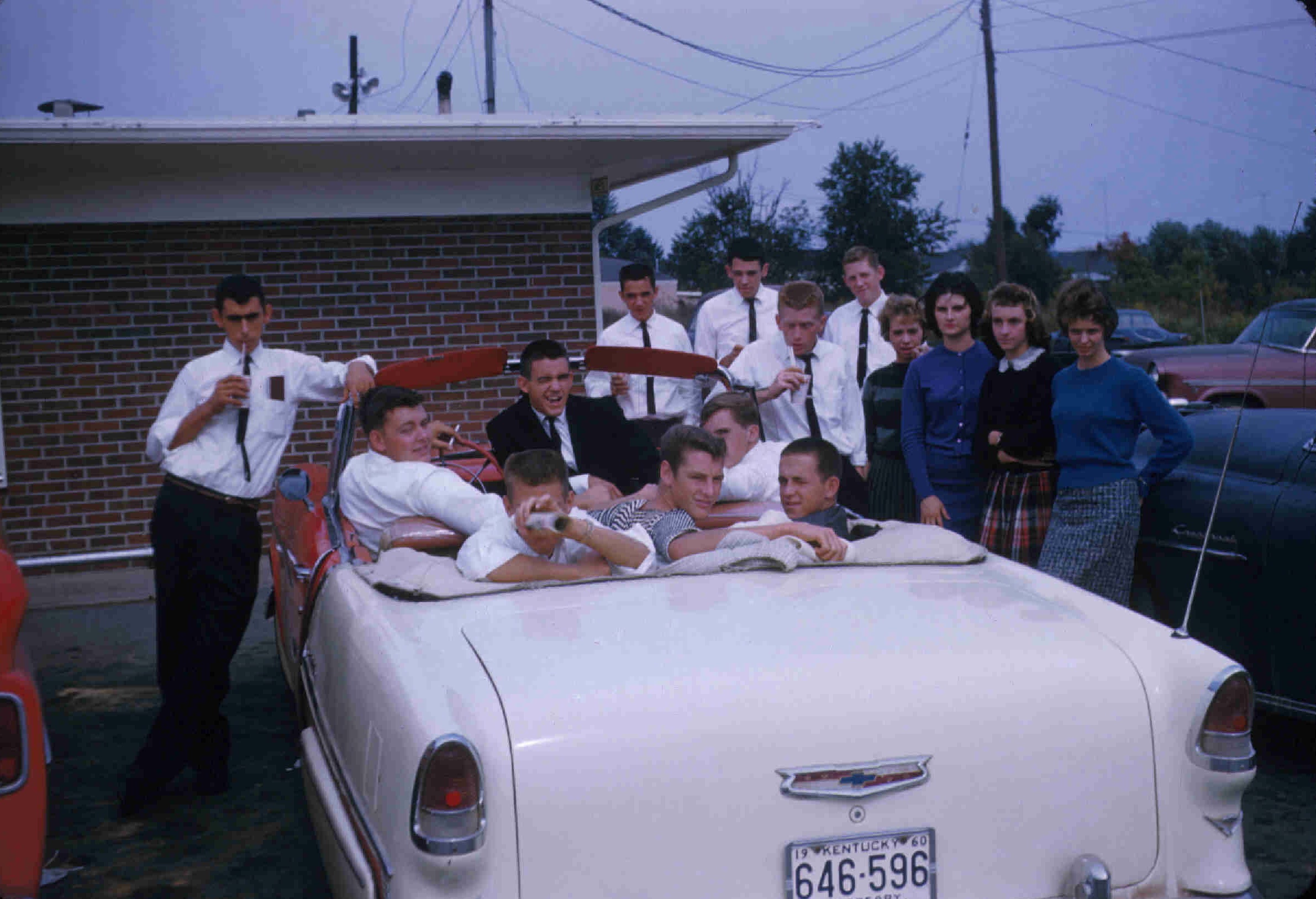
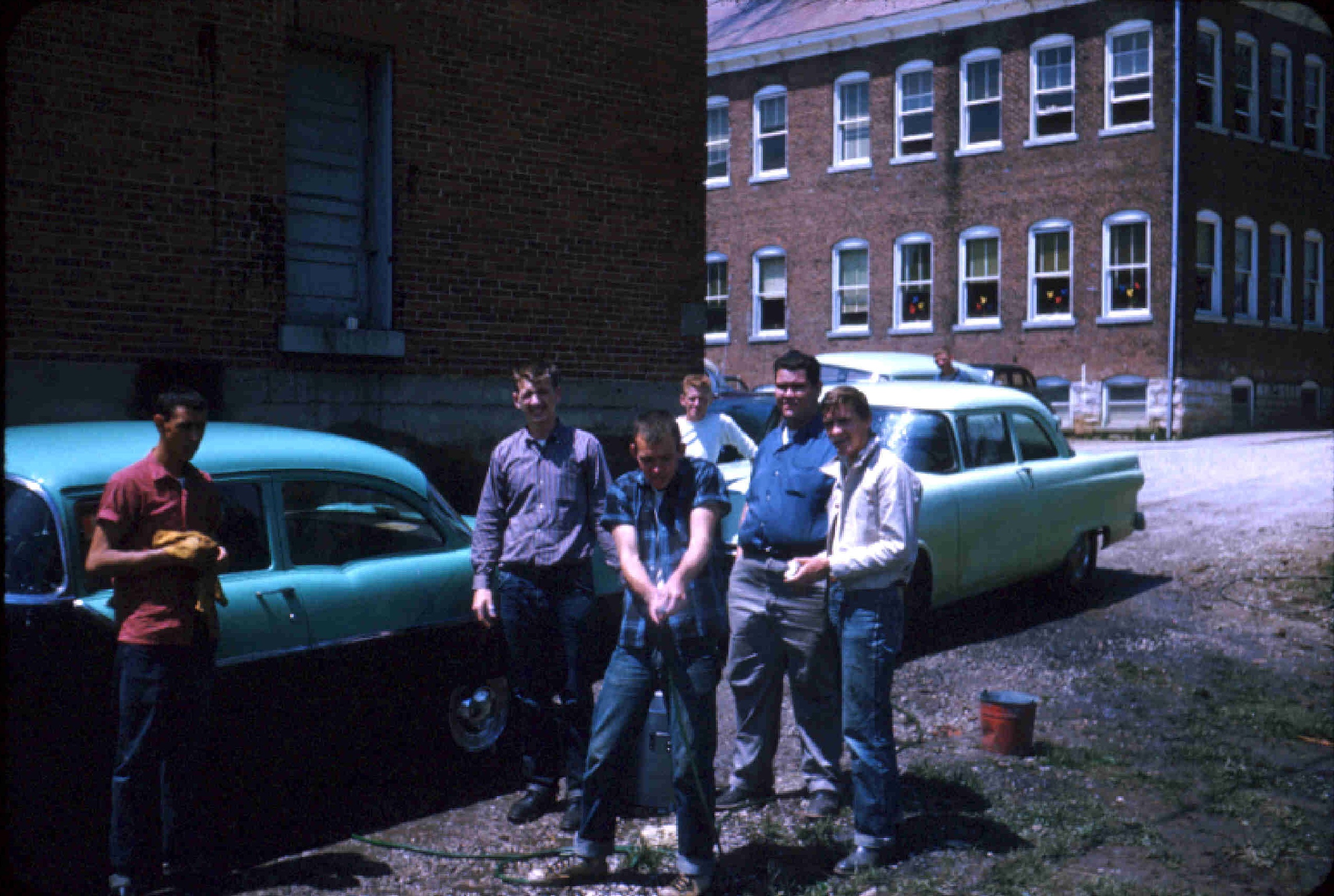
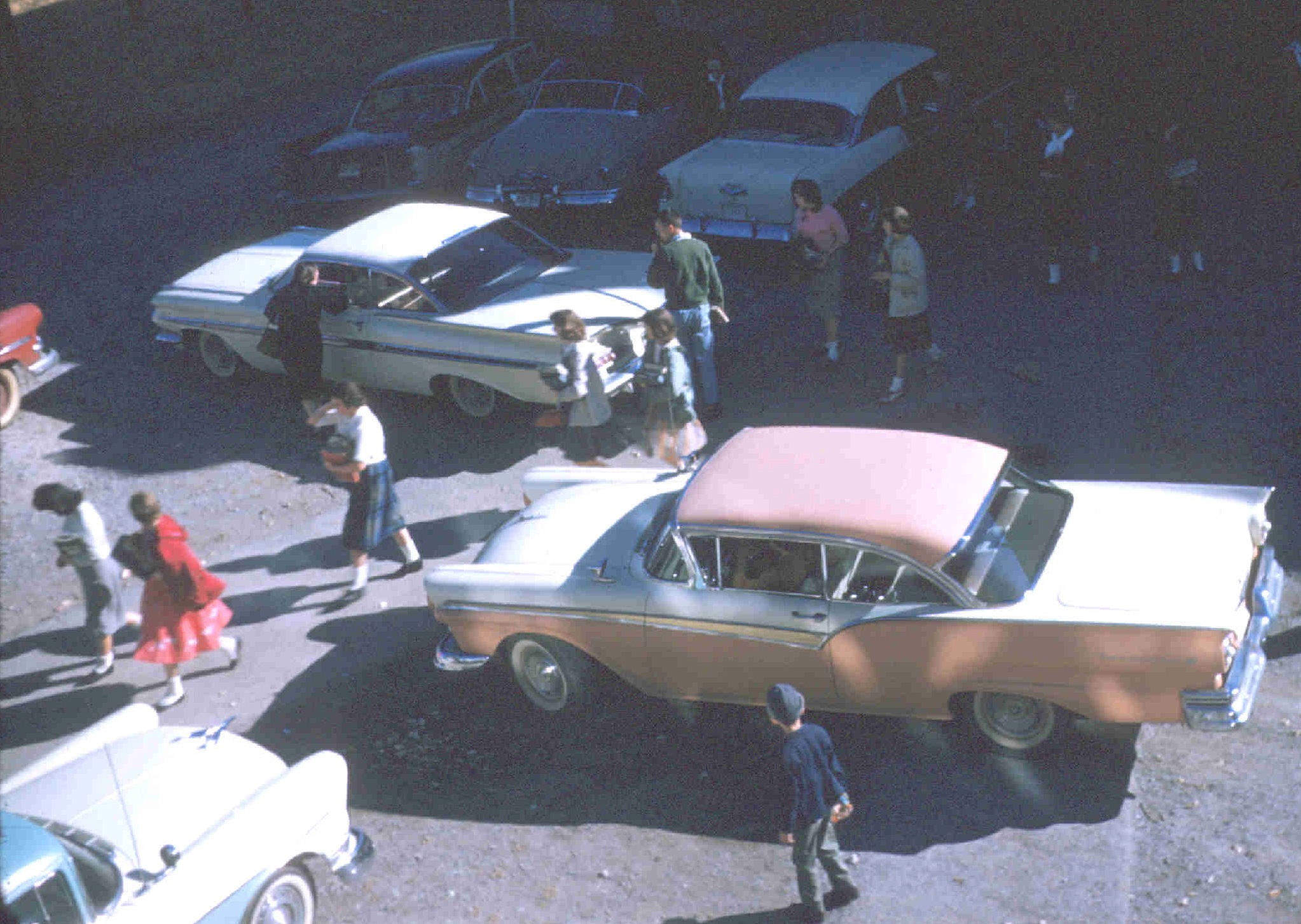

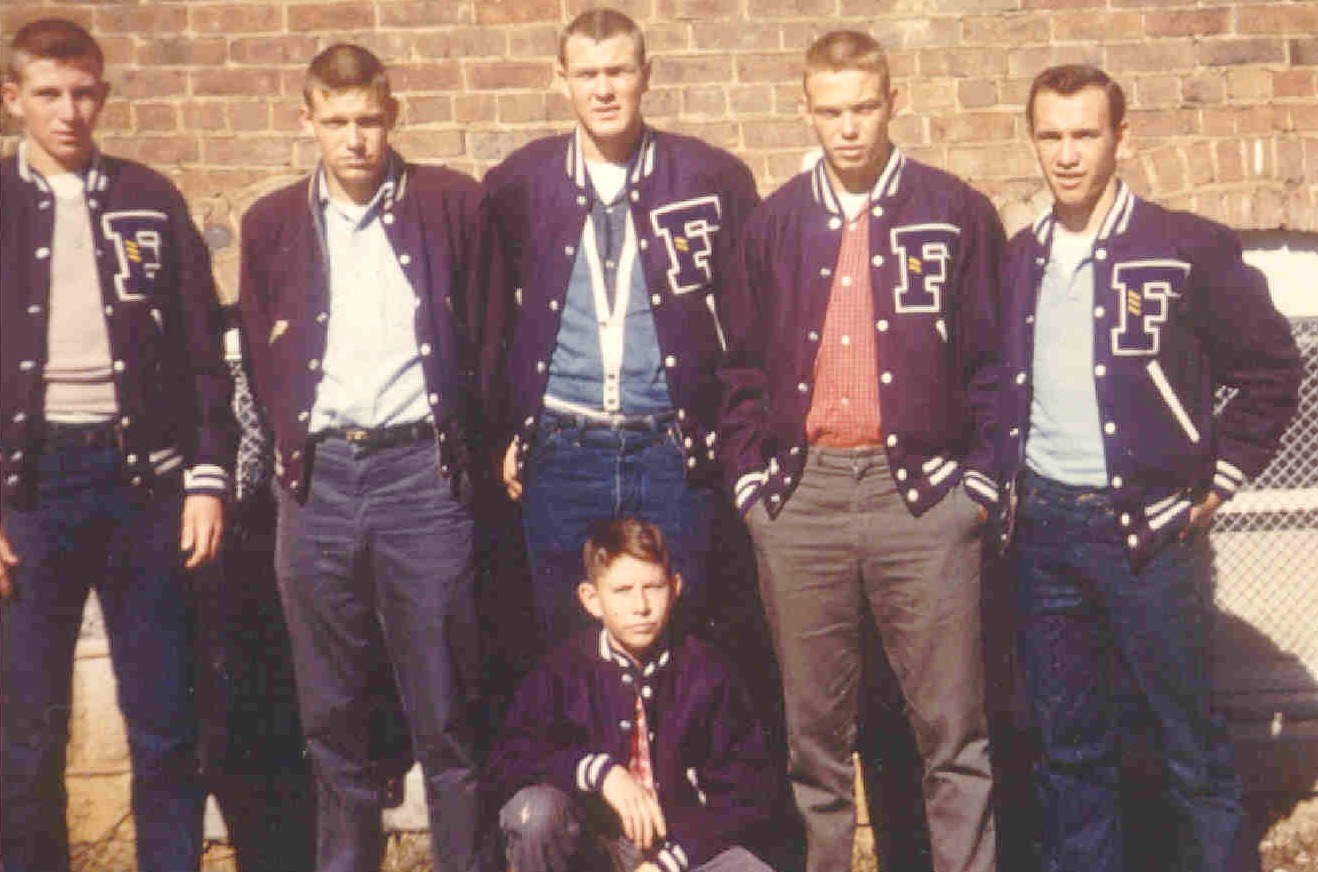

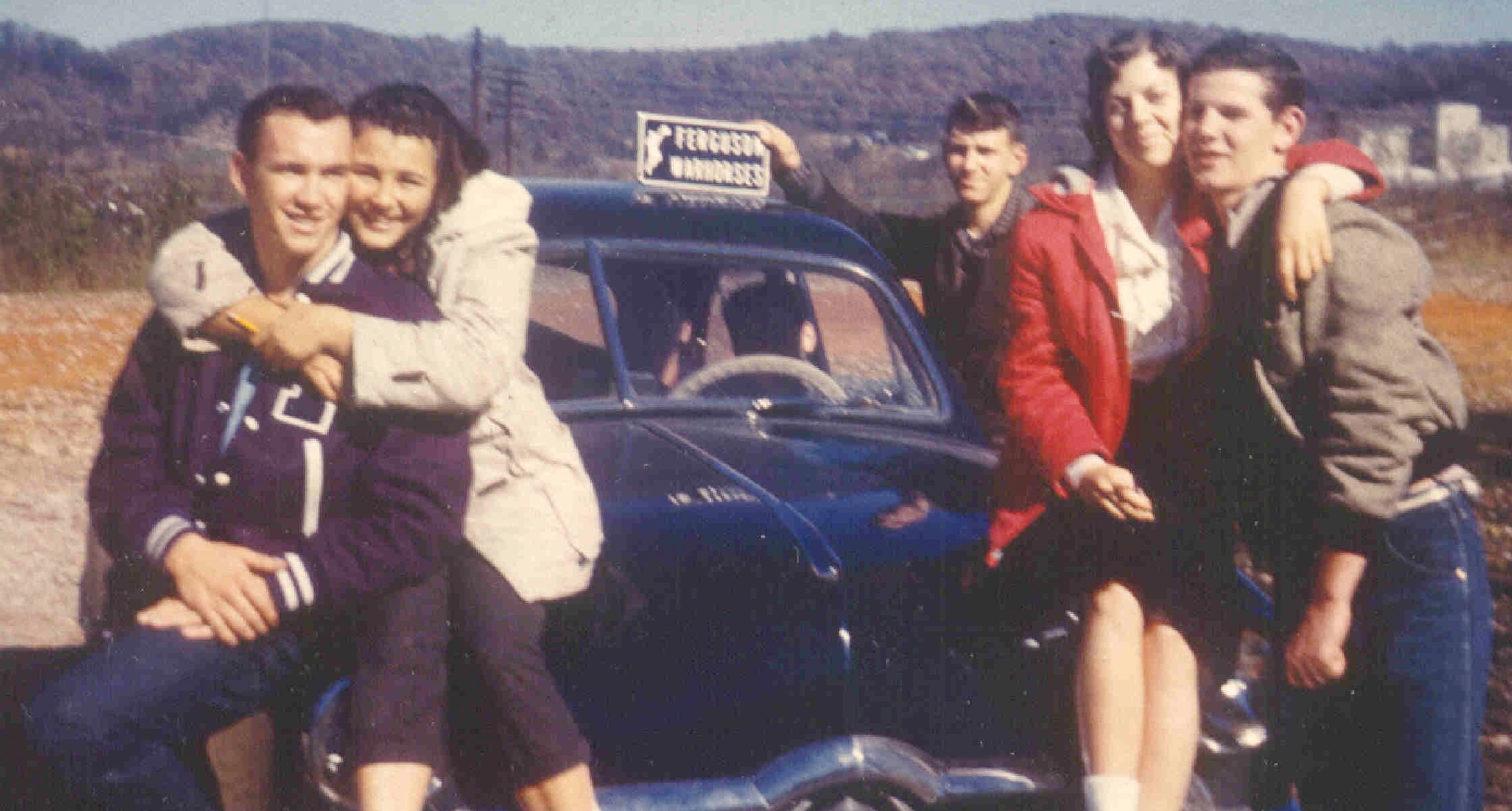
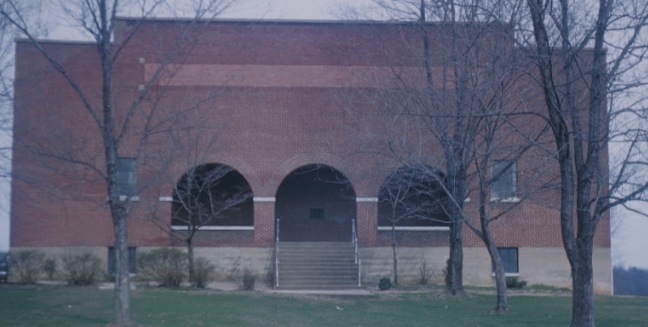
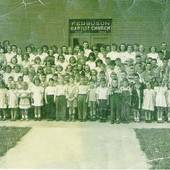
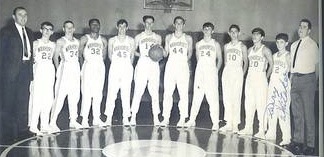
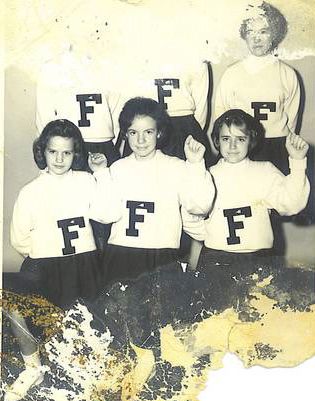


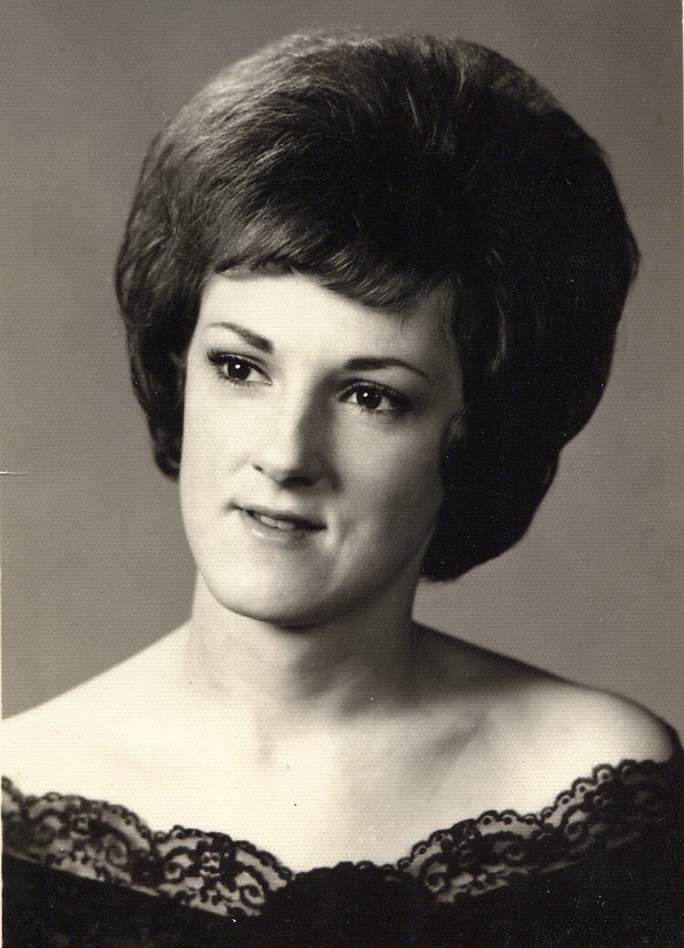
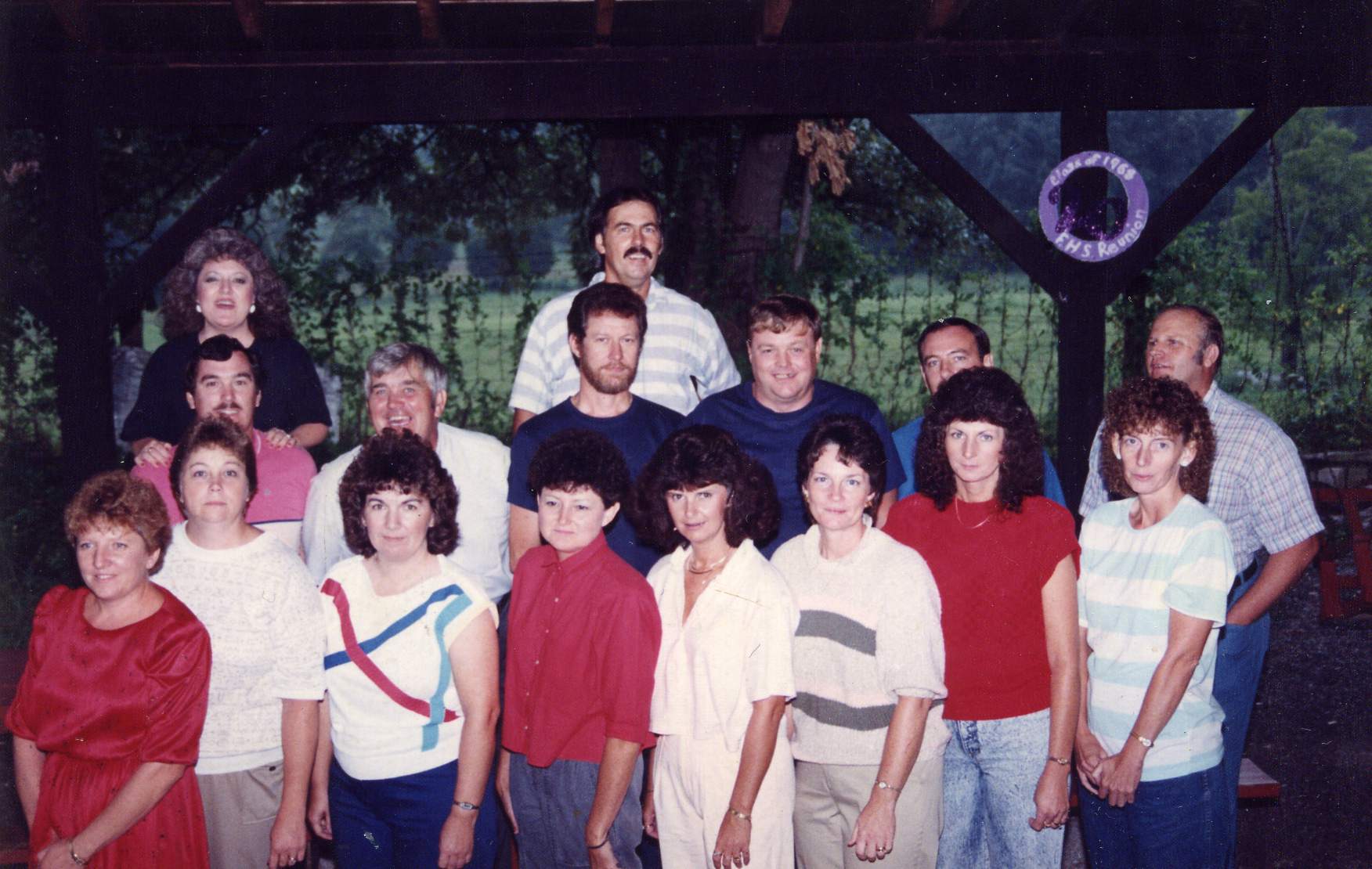
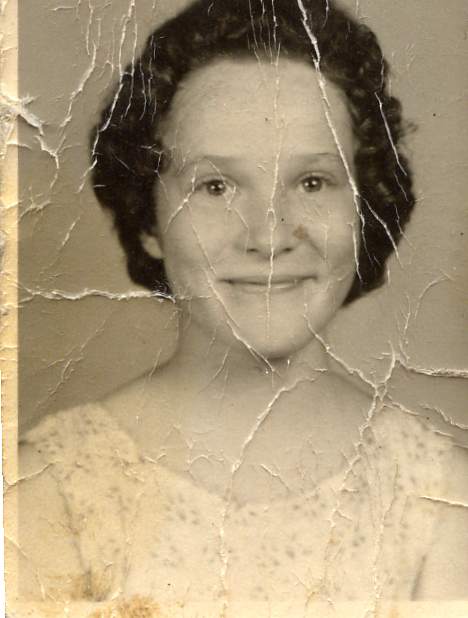
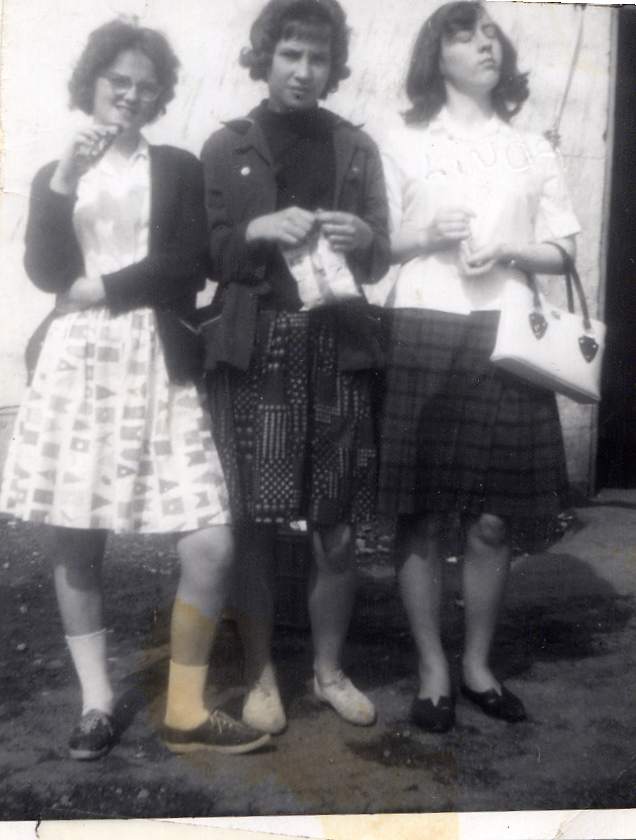

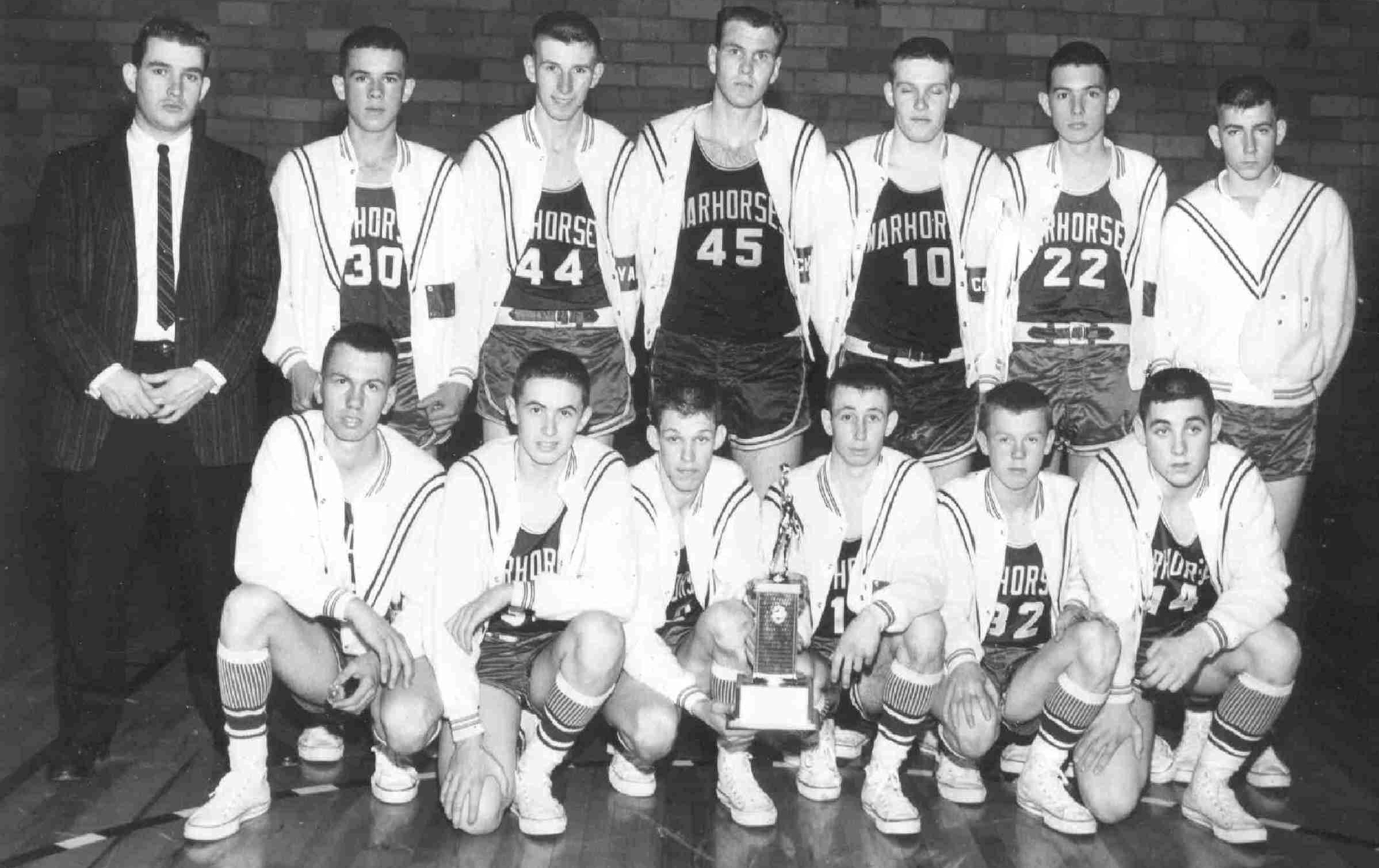
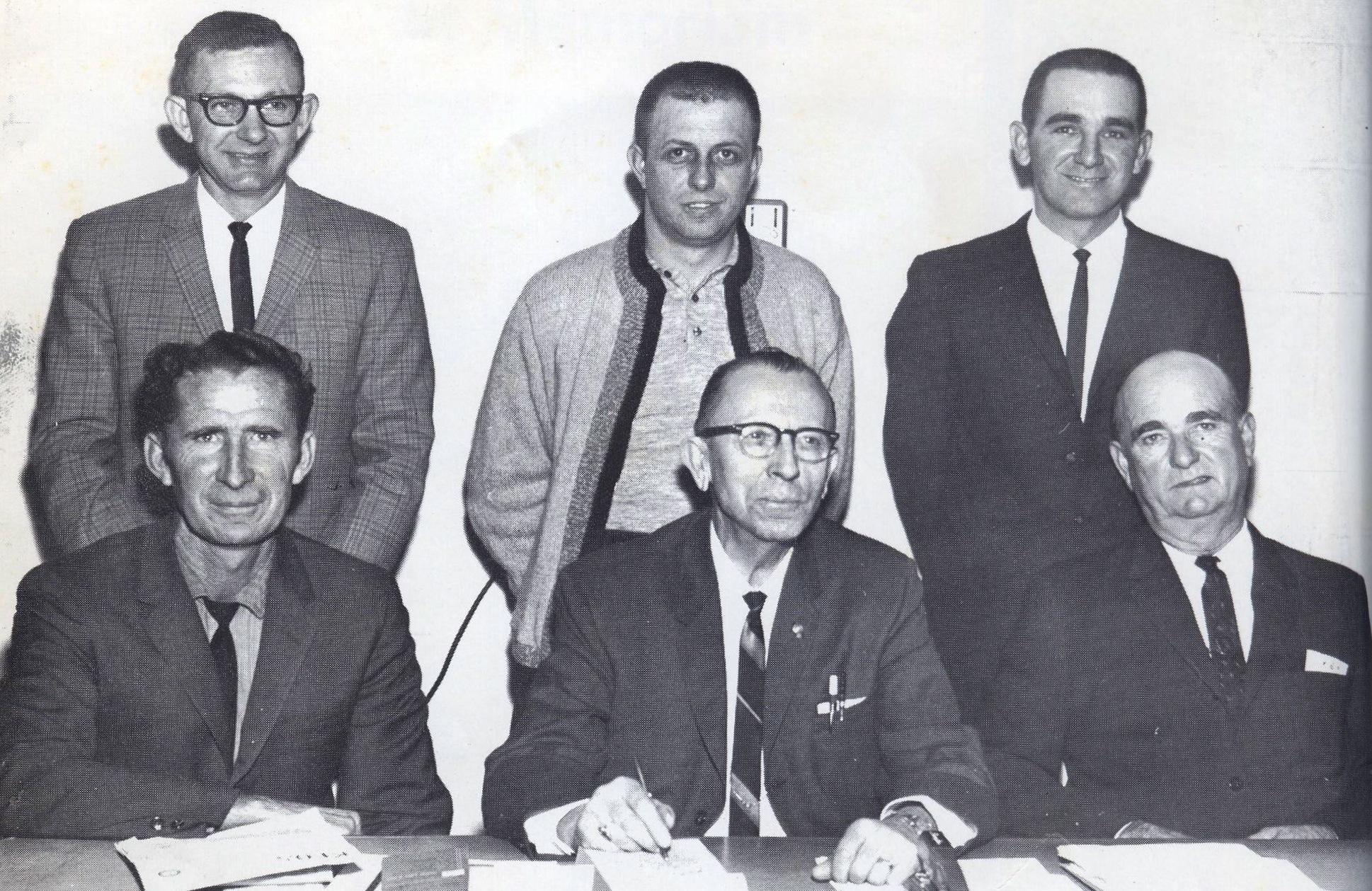
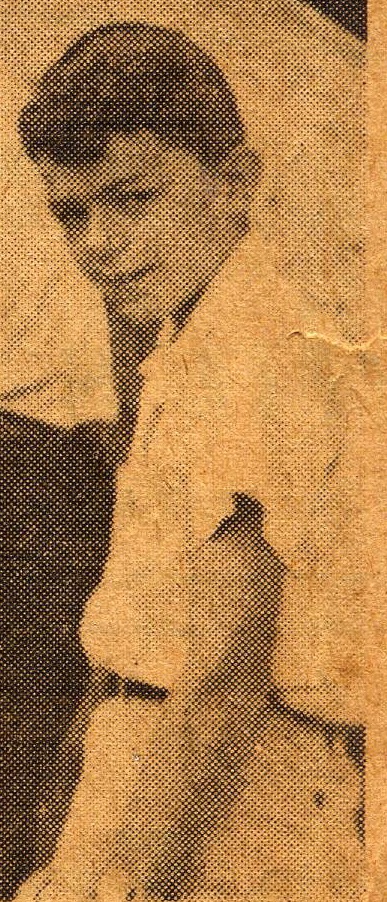
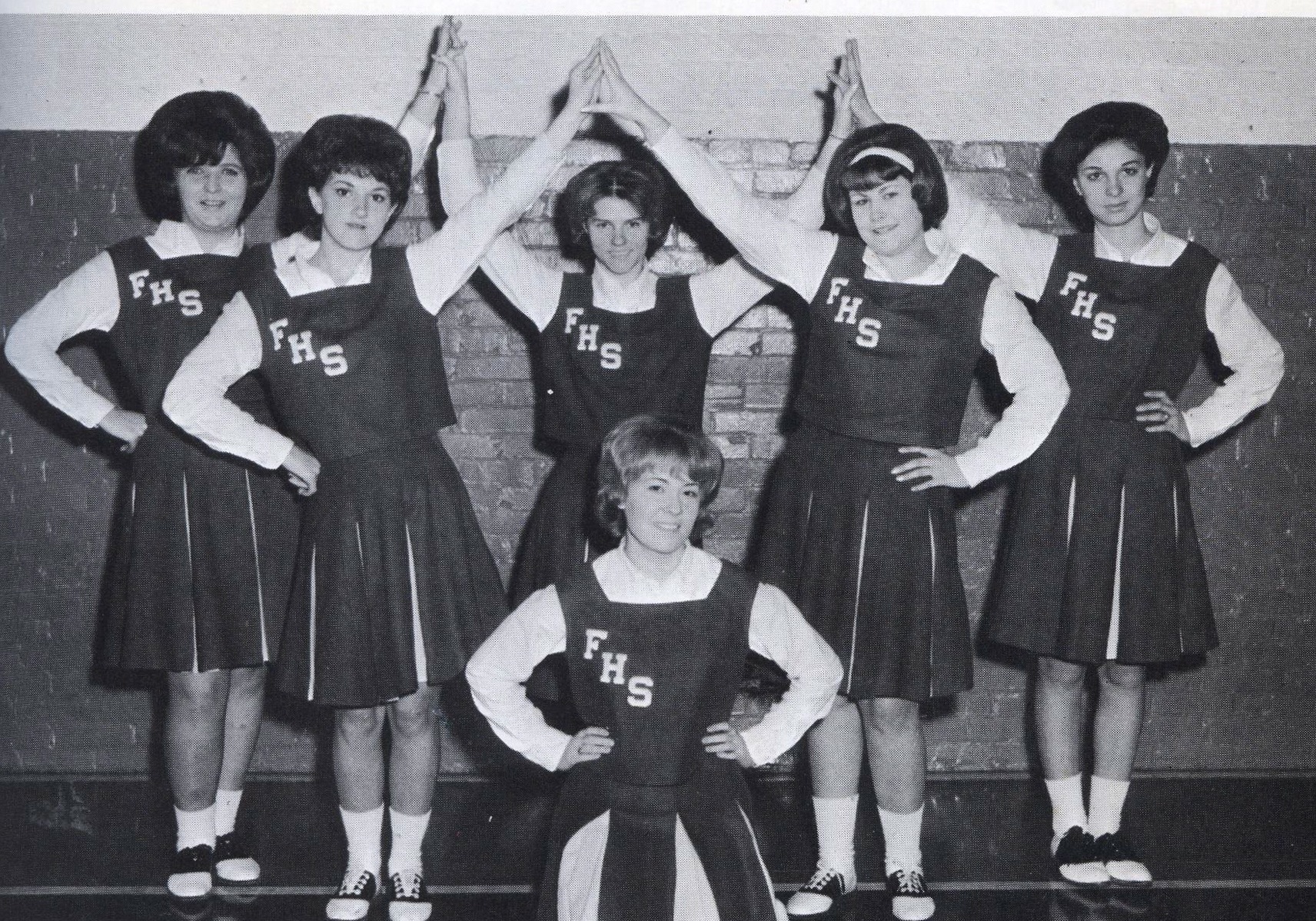
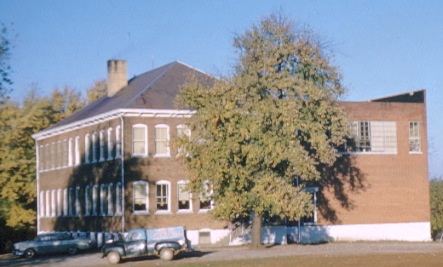
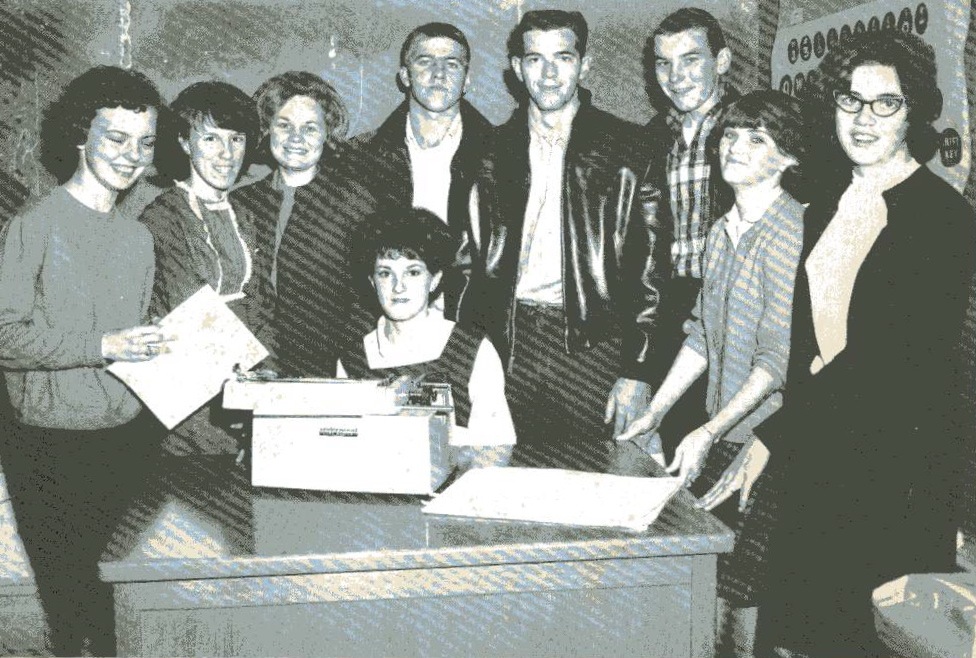
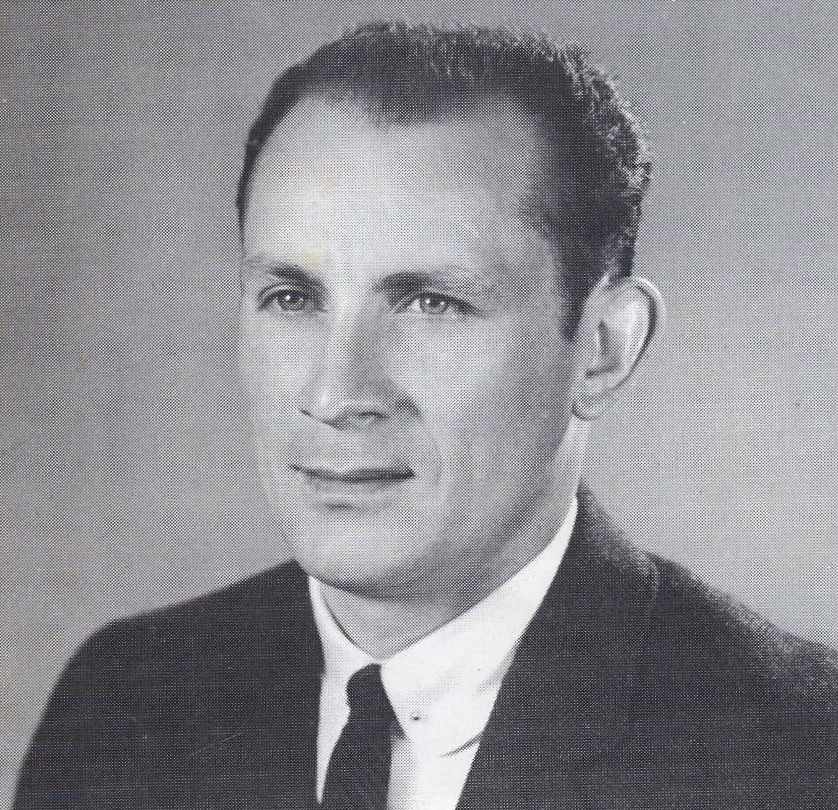

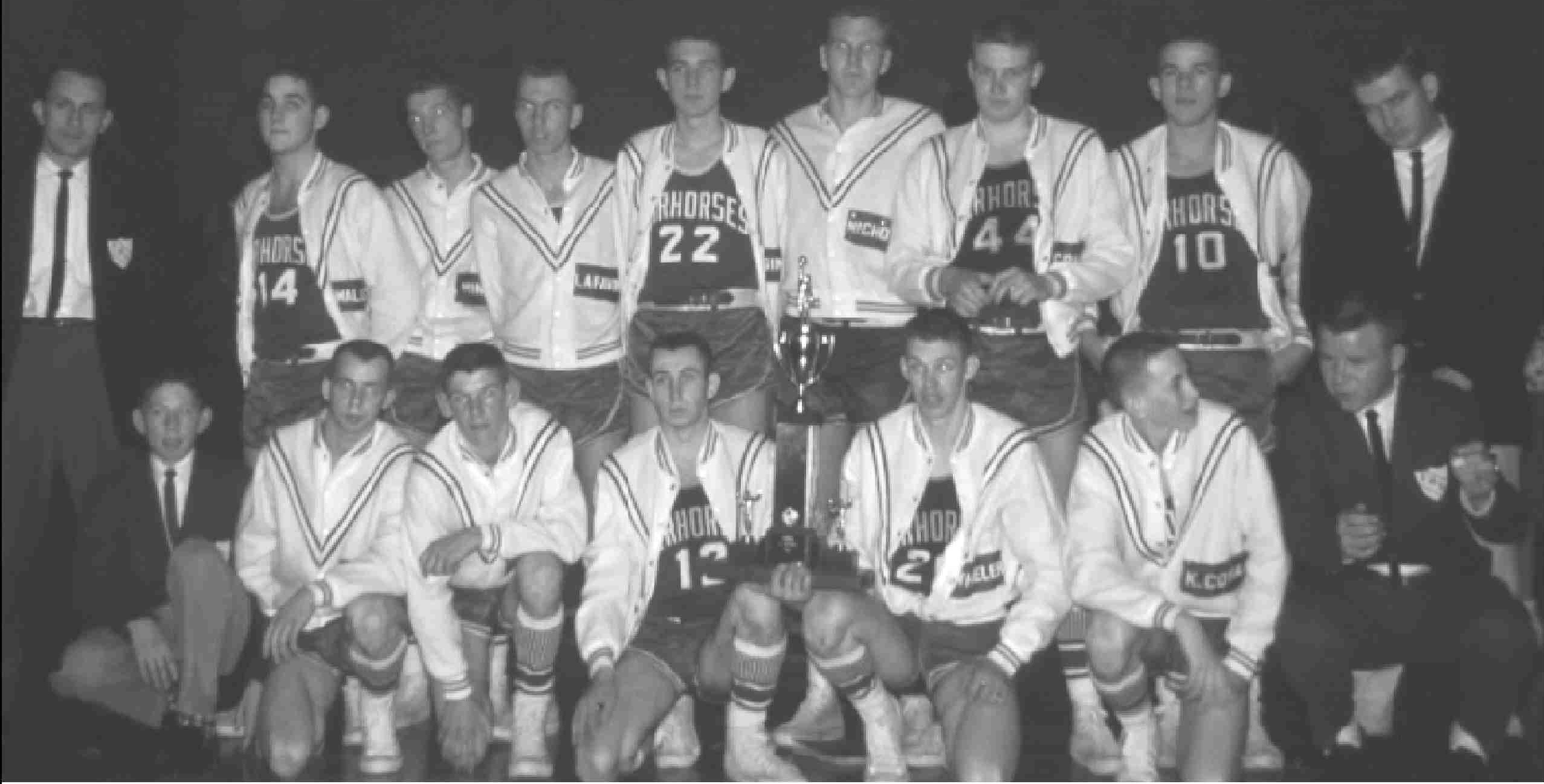

 Blondie9 at the Christmas Pageant in 1961
Blondie9 at the Christmas Pageant in 1961